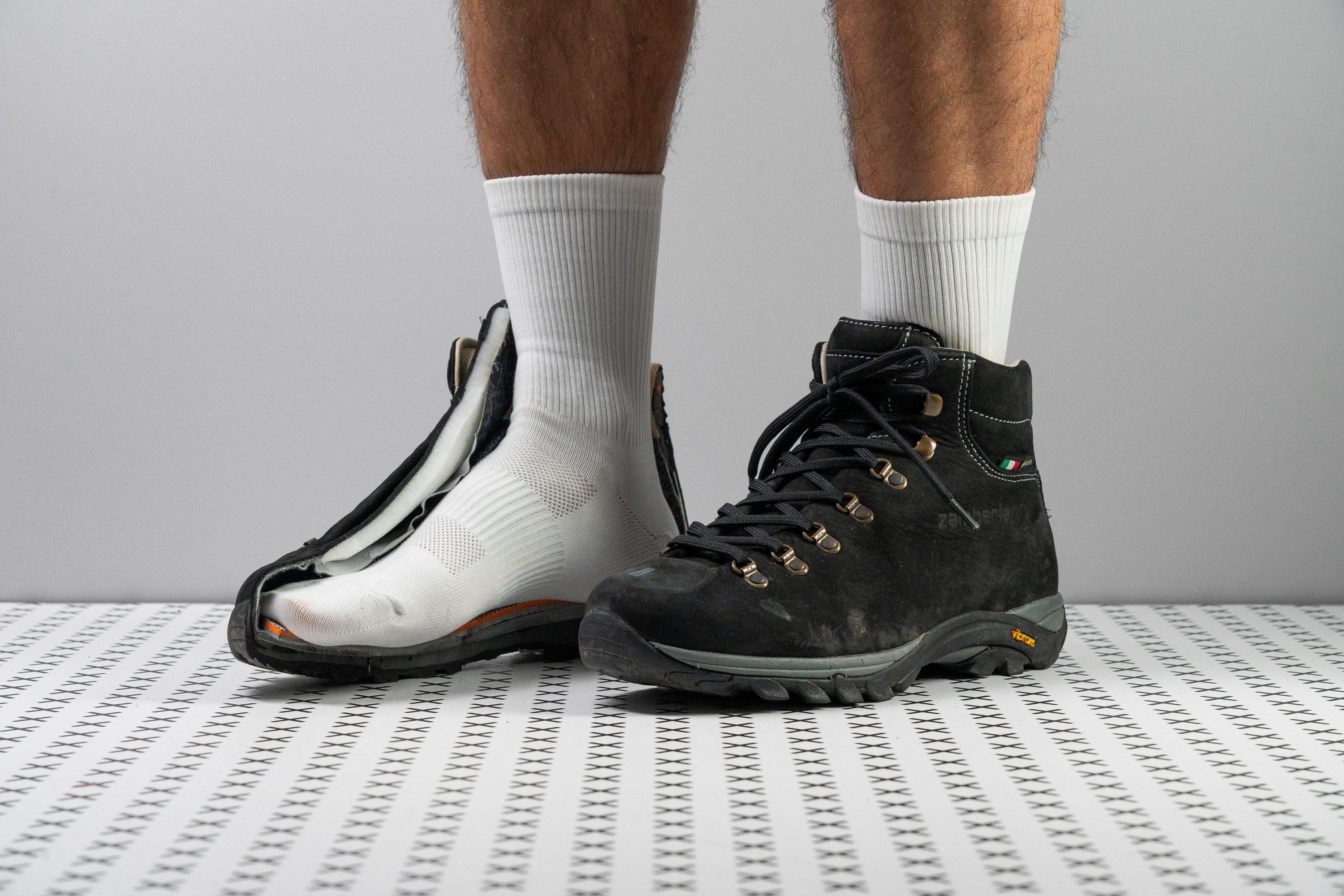Nuestra conclusión
Pros
- Muy buena sujeción y estabilidad
- Mucha protección contra impactos para rutas largas
- Cómodas
- Ligeras para ser unas botas de trekking
- Impermeables
- Parte delantera espaciosa
- Materiales muy duraderos
- Agarre sólido en distintos terrenos
- Diseño retro y liso
Contras
- No son para terrenos técnicos o muy blandos
- Caras
- Se vuelven mucho más rígidas con el frío
Veredicto de los usuarios
- Top 22% entre botas de senderismo
- Top 30% entre botas de senderismo de cuero
Comparativa
Las botas de senderismo más parecidas
+ + Añadir unas zapatillas | |||||
|---|---|---|---|---|---|
| Puntuación global | 89 Notables | 89 Notables | 87 Notables | 77 Aceptables | |
| Precio | 330 € | 180 € | 180 € | 210 € | |
| Terreno de trail | SencilloModerado | ModeradoTécnico | Moderado | ModeradoTécnico | |
| Peso laboratorio Peso marca | 19.5 oz / 553g 19 oz / 540g | 21.2 oz / 601g 19.4 oz / 550g | 15.4 oz / 437g 15.5 oz / 440g | 20.6 oz / 583g 20.6 oz / 585g | |
| Lightweight | ✗ | ✗ | ✓ | ✗ | |
| Transpirabilidad | Baja | Baja | Baja | Baja | |
| Uso | TrekkingSenderismo de un día | TrekkingSenderismo de un díaNieve | TrekkingSenderismo de un día | TrekkingSenderismo de un díaNieve | |
| Orthotic friendly | ✓ | ✓ | ✓ | ✓ | |
| Drop laboratorio | 11.2 mm | 12.6 mm | 12.7 mm | 14.0 mm | |
| Talla | Tallan bien | Tallan bien | Tallan bien | Tallan un poquito pequeño | |
| Rigidez de la mediasuela | Firme | Equilibrada | Firme | Equilibrada | |
| Diferencia de la rigidez de la mediasuela en frío | Pequeña | Estándar | Pequeña | Pequeña | |
| Rigidez del contrafuerte del talón | Moderada | Moderada | Flexible | Moderada | |
| Flexibilidad | Rígida | Rígida | Flexible | Moderada | |
| Dureza de la suela | Estándar | Muy blanda | - | Dura | |
| Impermeabilización | Impermeables | Impermeables | Impermeables | Impermeables | |
| Material | Piel o cuero | Piel o cuero | Textil | Ante | |
| Estación | Invierno | Invierno | Invierno | Invierno | |
| Durabilidad de la parte delantera | Buena | Buena | Decente | Buena | |
| Durabilidad del acolchado del talón | Alta | Baja | Baja | Media | |
| Durabilidad de la suela exterior | Decente | Decente | Mala | Buena | |
| Anchura / ajuste | Media | Media | Media | Media | |
| Anchura de la parte delantera | Media | Media | Media | Estrecha | |
| Profundidad del dibujo de la suela | 3.3 mm | 4.7 mm | 3.5 mm | 4.0 mm | |
| Altura de la suela en la zona del talón laboratorio | 34.9 mm | 36.3 mm | 32.5 mm | 34.2 mm | |
| Antepié | 23.7 mm | 23.7 mm | 19.8 mm | 20.2 mm | |
| Anchuras disponibles | Estándar | Estándar | EstándarAncho | Estándar | |
| Tecnología | Gore-TexVibram | Gore-Tex | Gore-Tex | Gore-TexVibram | |
| Cut | Corte medio | Corte medio | Corte medio | Corte medio | |
| Removable insole | ✓ | ✓ | ✓ | ✓ | |
| Clasificación | #9 Top 22% | #11 Top 27% | #20 Top 49% | #39 4% inferior | |
| Popularidad | #27 34% inferior | #25 39% inferior | #2 Top 5% | #41 1% inferior |
Who should buy
We believe that the Zamberlan 320 Trail Lite Evo GTX is worth your attention if:
- you prefer Italian boots with all-leather uppers (especially when produced with a high-end and eco-friendly artisanal tanning)
- you prioritize comfortable backpacking boots without a painful break-in period
- you are willing to invest in a long-lasting pair of boots
- you can't get enough of its retro mountaineering boot aesthetics
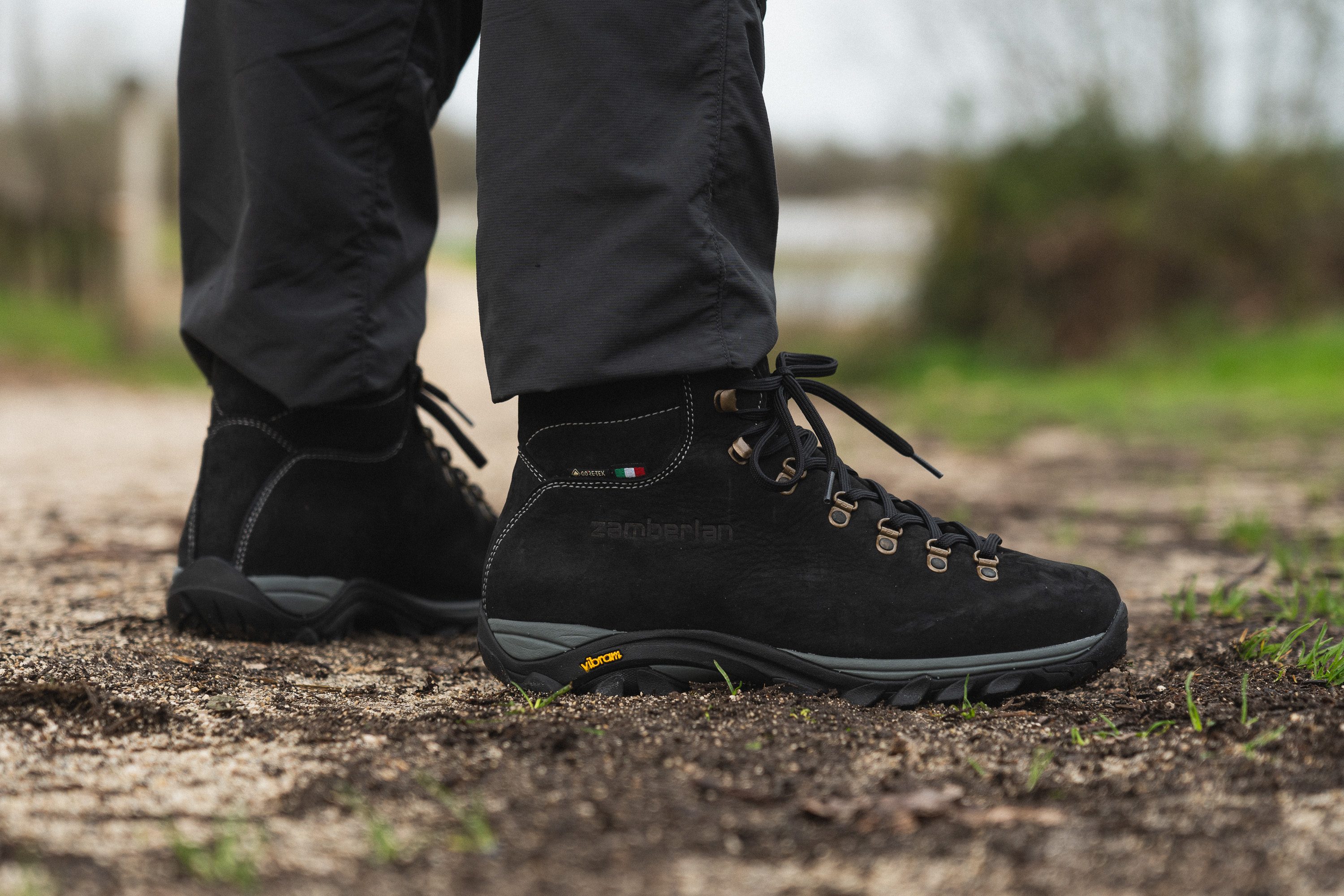
Who should NOT buy
The overall style and material choices dictate the boot's high asking price. But if all you care about is performance and durability, there are considerably cheaper alternatives that get the job done on challenging terrain.
We highly recommend the Salomon Quest 4 GTX and the Salewa Alp Trainer 2 Mid GTX among other tried-and-true backpacking boots.
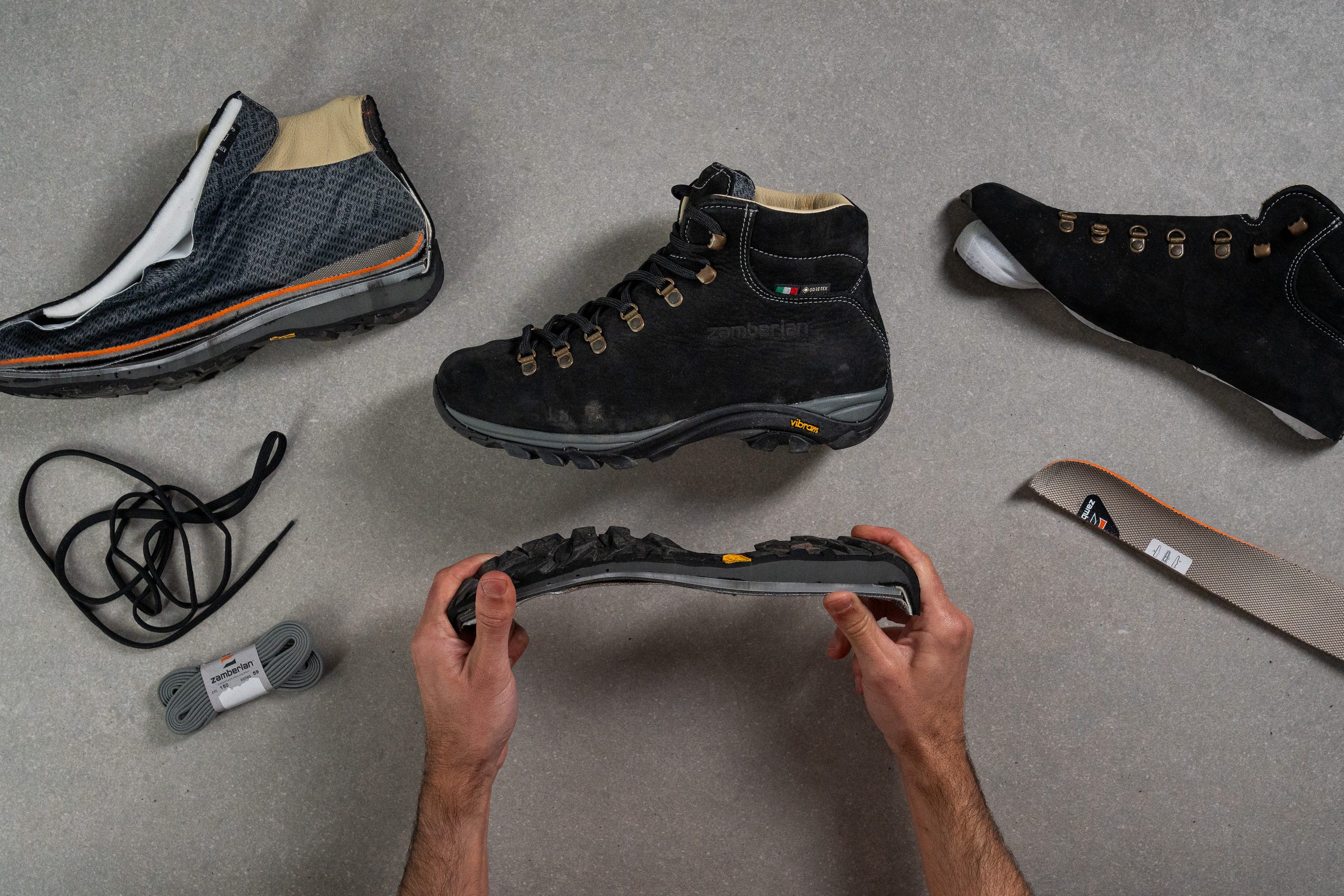
Amortiguación
Altura de la suela en la zona del talón
We experienced a solid amount of impact protection and isolation from trail in the Zamberlan 320 Trail Lite Evo GTX.
With a heel stack of 34.9 mm, the boot packs enough underfoot material to keep the foot guarded on both day hiker and multi-day adventures.
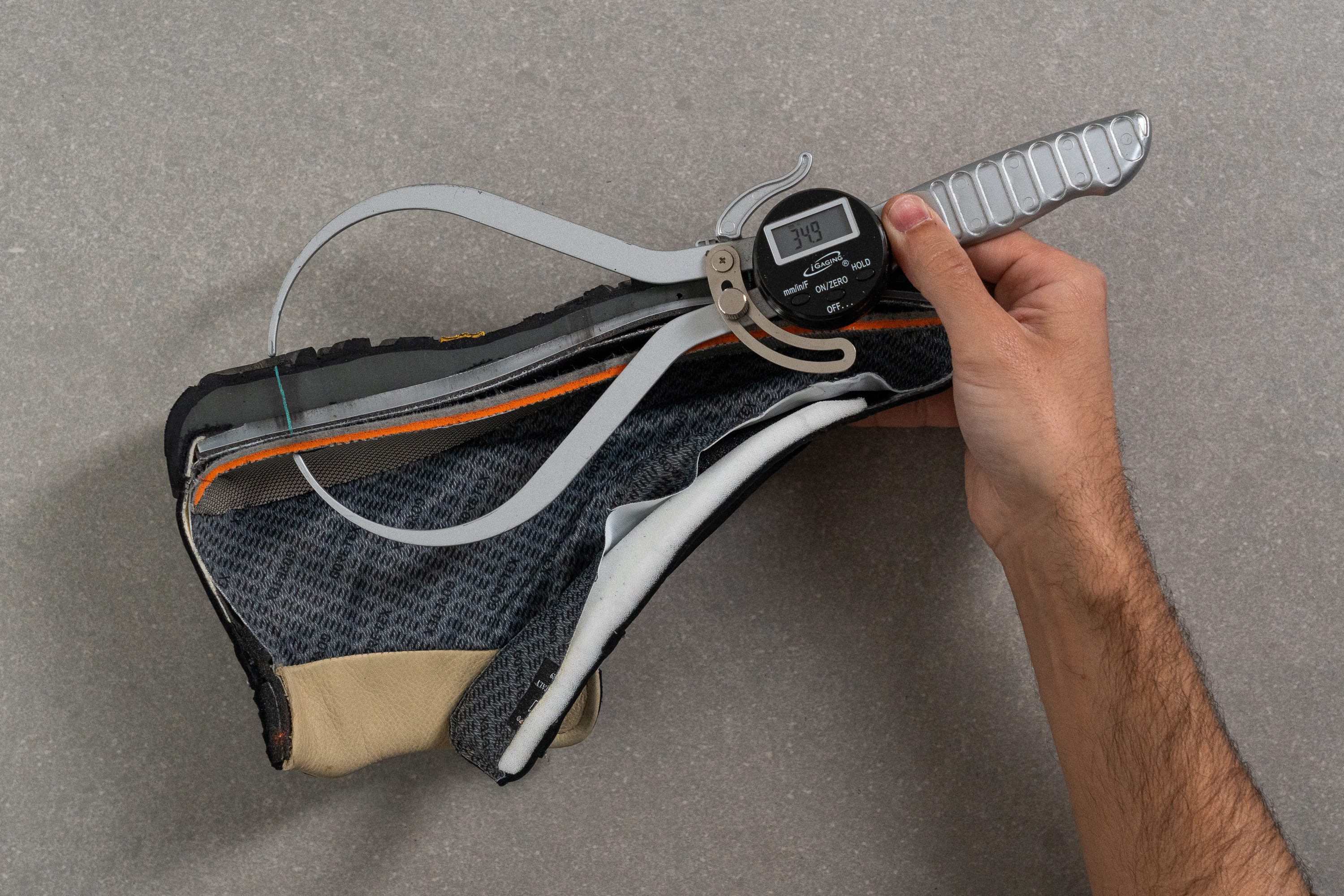
| 320 Trail Lite Evo GTX | 34.9 mm |
| Media | 36.3 mm |
Altura de la suela en el antepié
The boot turned out to be equally protective in the ball of foot area. Our caliper measured an above-average forefoot stack height of 23.7 mm which is a great buffer against rocks, roots, and other debris.
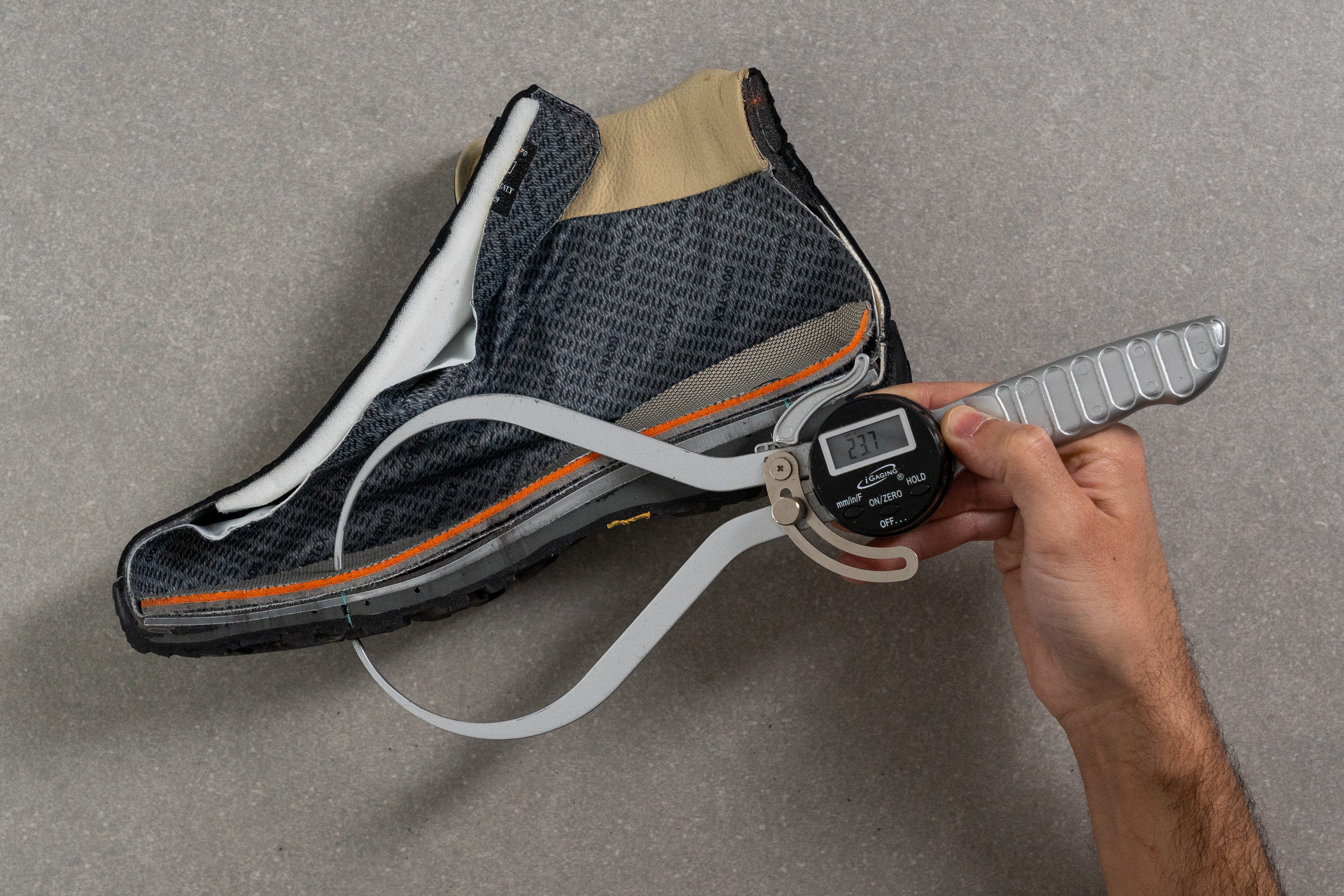
| 320 Trail Lite Evo GTX | 23.7 mm |
| Media | 23.0 mm |
Drop
We are pleased to see a moderate heel-to toe drop of 11.2 mm in this Zamberlan boot. It should sit well with most hikers, both beginner and seasoned.
The offset is neither too high to cause foot sliding nor too low to put pressure on the Achilles and calves.
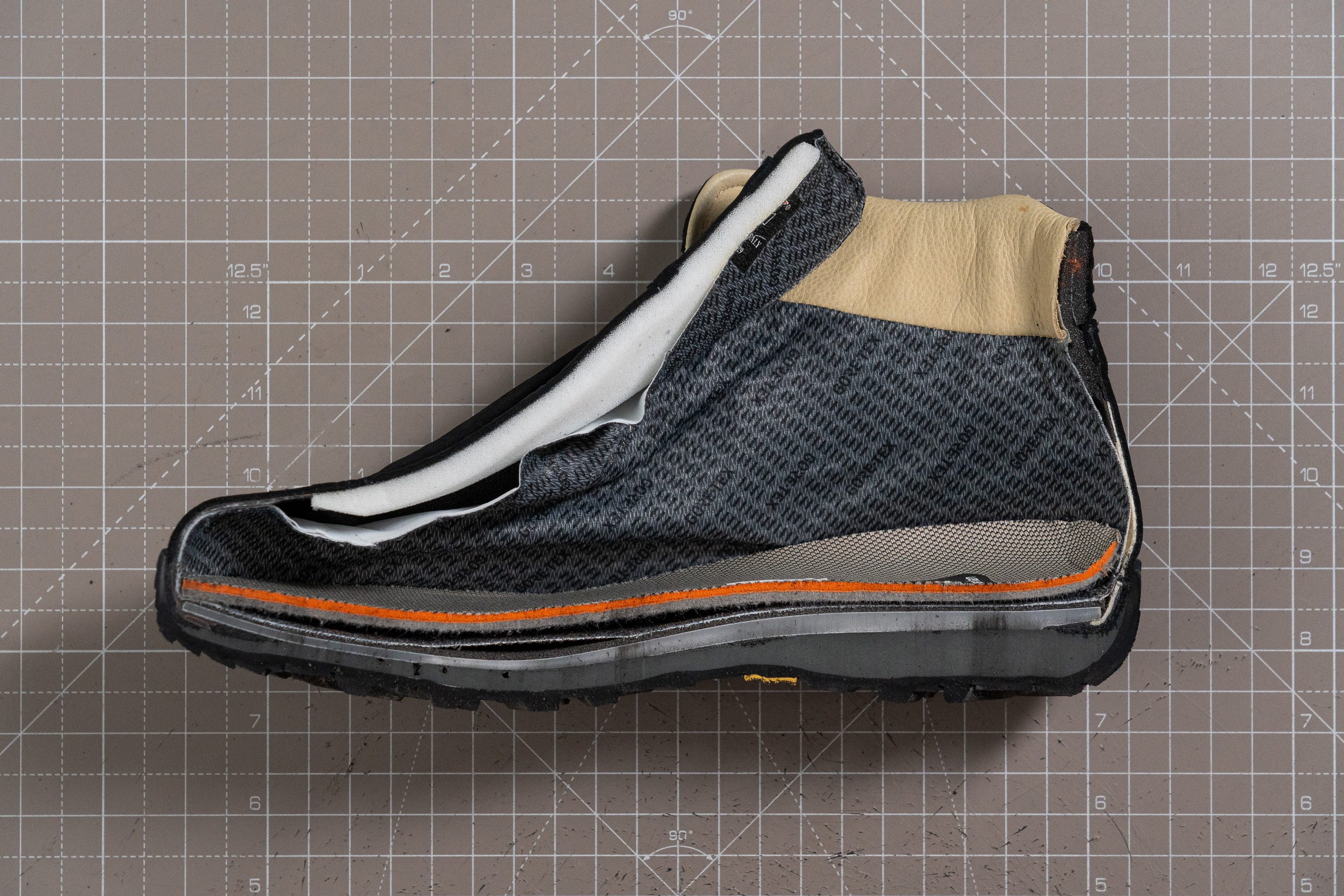
| 320 Trail Lite Evo GTX | 11.2 mm |
| Media | 13.3 mm |
Suavidad de la mediasuela
Despite its very comfortable step-in feel, the 320 Trail Lite Evo GTX is not a plush boot. Its midsole generates a lot of support and stability through a rather firm EVA midsole.
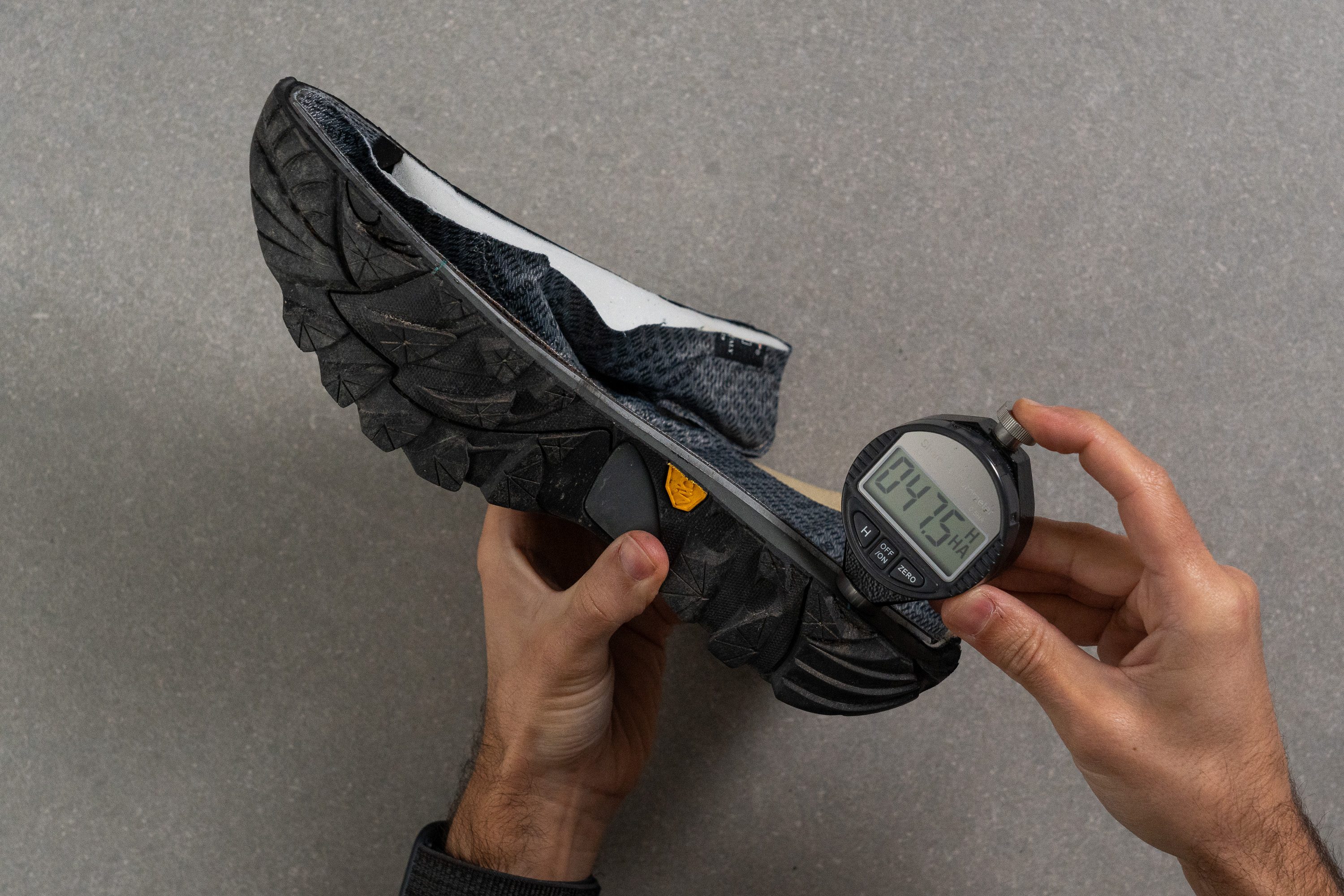
Using a Shore A durometer, we measured its firmness at 47.4 HA which is 70%(!) harder than the average cushioning foam of a hiking boot.
It doesn't feel completetly unforgiving but if you prefer a softer underfoot experience, try the Lowa Renegade GTX Mid (25.6 HA) or the plush Hoka Kaha 2 GTX (21.7 HA).
| 320 Trail Lite Evo GTX | 47.4 HA |
| Media | 28.4 HA |
Suavidad de la espuma secundaria
We also discovered a stiff full-length plastic shank on top of the boot's already firm EVA foam. With a whopping durometer reading of 98.5 HA, it appears to be responsible for most of the boot's rigidity (more on that in the Stability section).
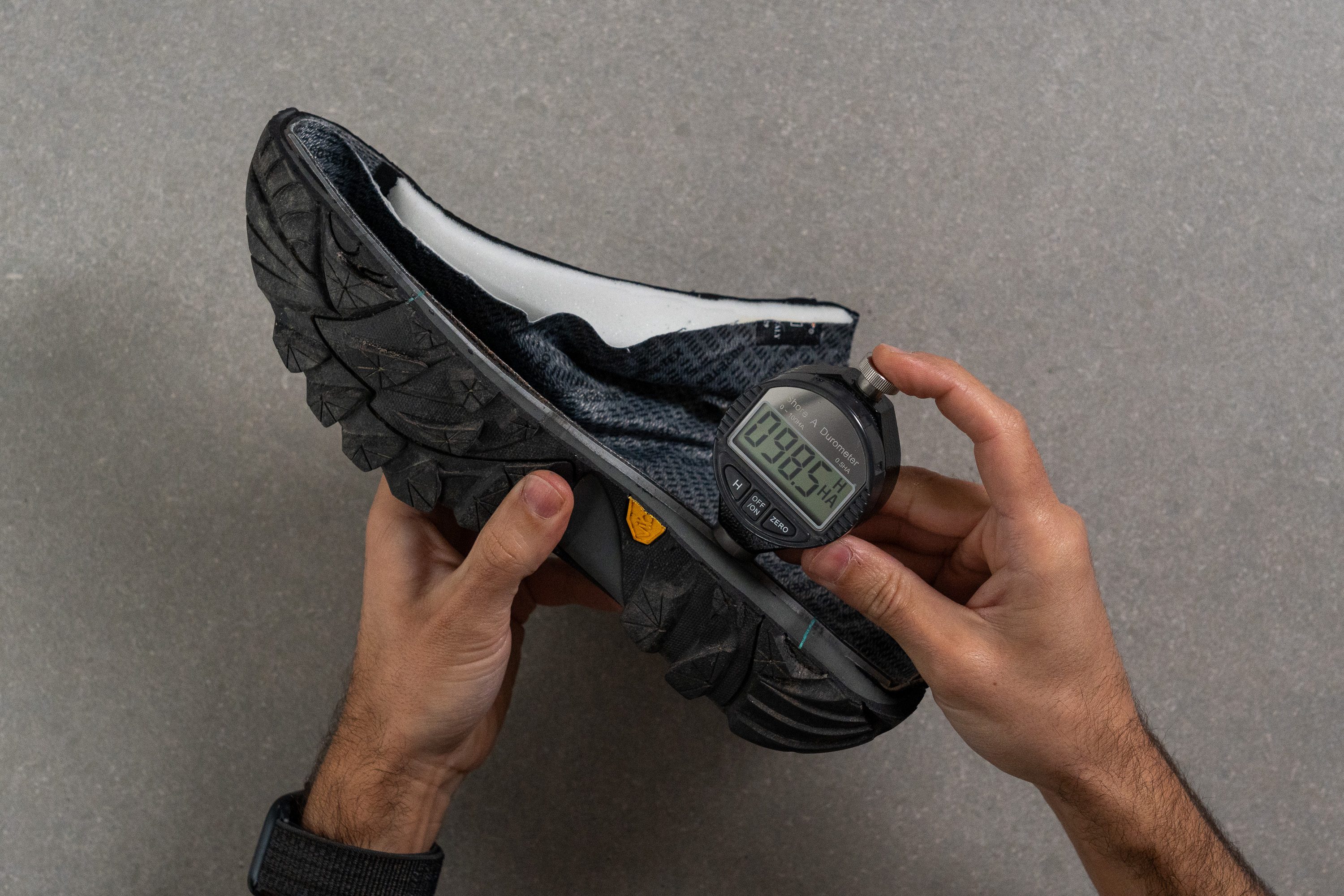
Tallaje y ajuste
Talla
Las Zamberlan 320 Trail Lite Evo GTX tallan bien (28 votos).
Anchura / Ajuste
According to Zamberlan, the 320 Trail Lite Evo GTX is built on a ZBPK backpacking performance last which offers "precise fit for technical hiking without compromising on comfort."
We can subscribe to that statement based on our own wear tests and lab measurements.
Having created a gel mold of the boot's interiors, we were able to measure its width precisely with a caliper. Our tool recorded an above-average reading of 94.8 mm in the widest part of the mold.
This is indeed enough room to accommodate thicker socks some swelling.
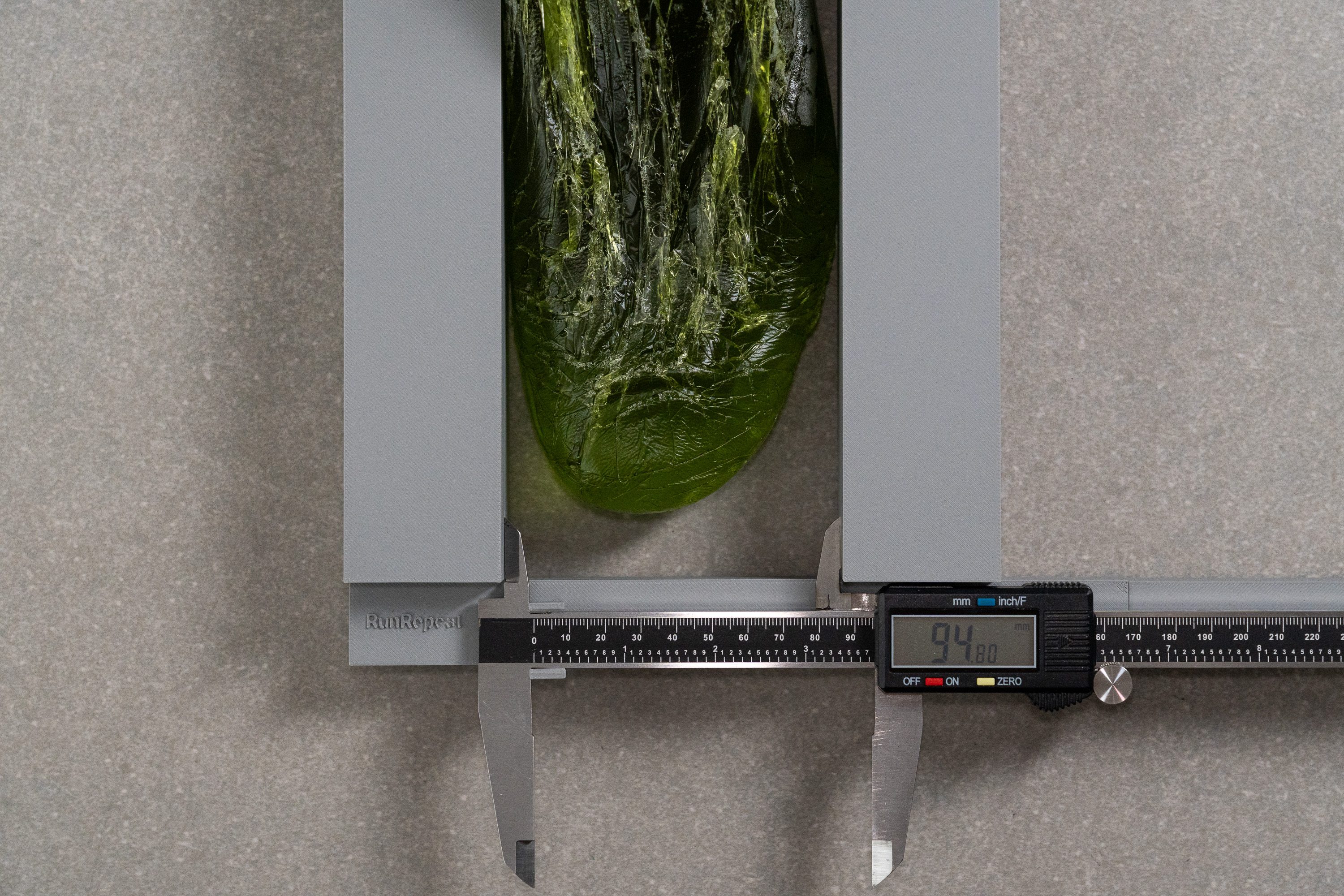
| 320 Trail Lite Evo GTX | 94.8 mm |
| Media | 93.8 mm |
Anchura de la parte delantera
We also found that the boot's toebox has a moderately rounded shape and a standard width of 70.5 mm near the big toe. It is not pointy or restricting for a D medium width.
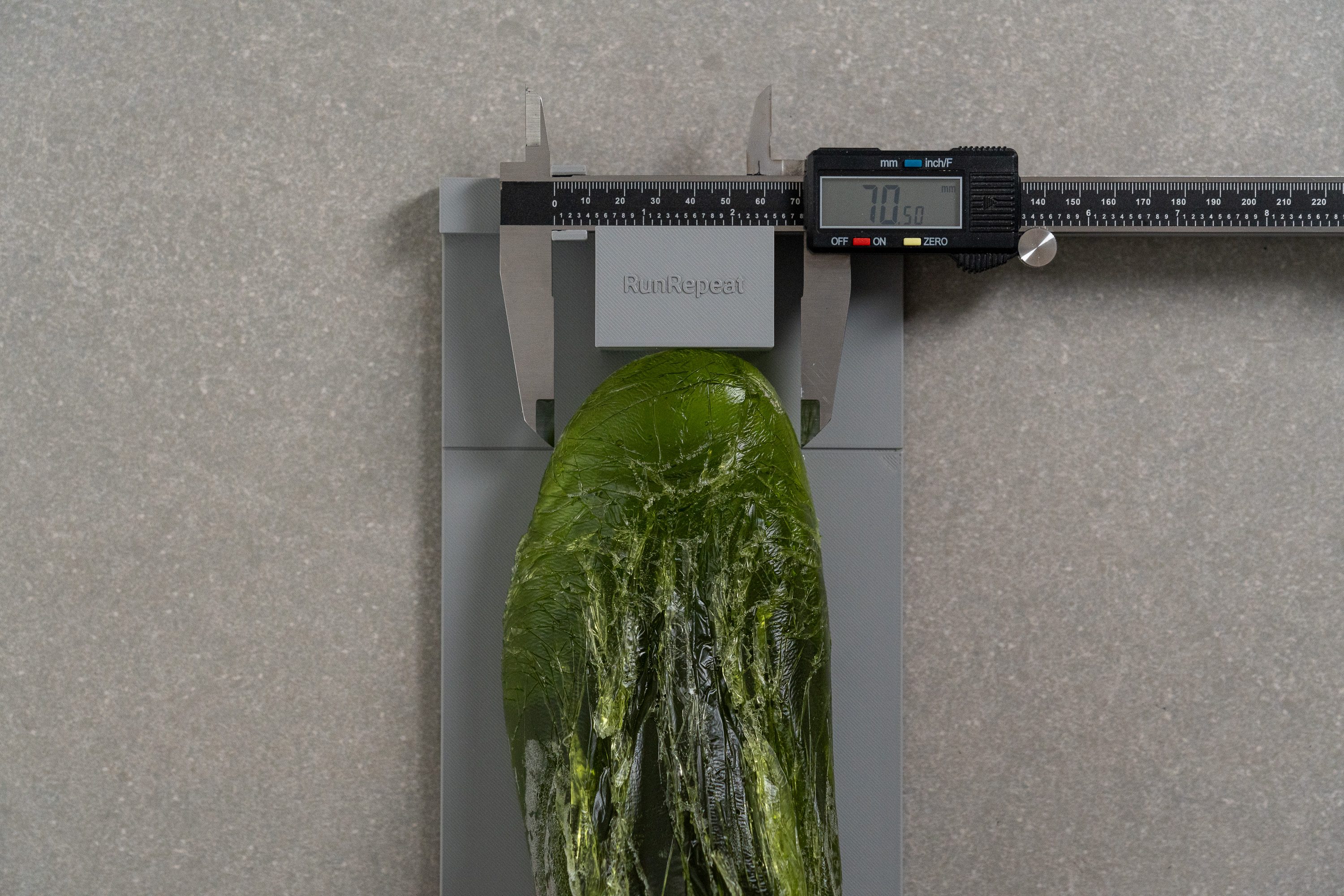
| 320 Trail Lite Evo GTX | 70.5 mm |
| Media | 71.2 mm |
Altura de la parte delantera
The risk of getting black toenails is also minimal in this boot thanks to its adequate toebox height of 26.8 mm.
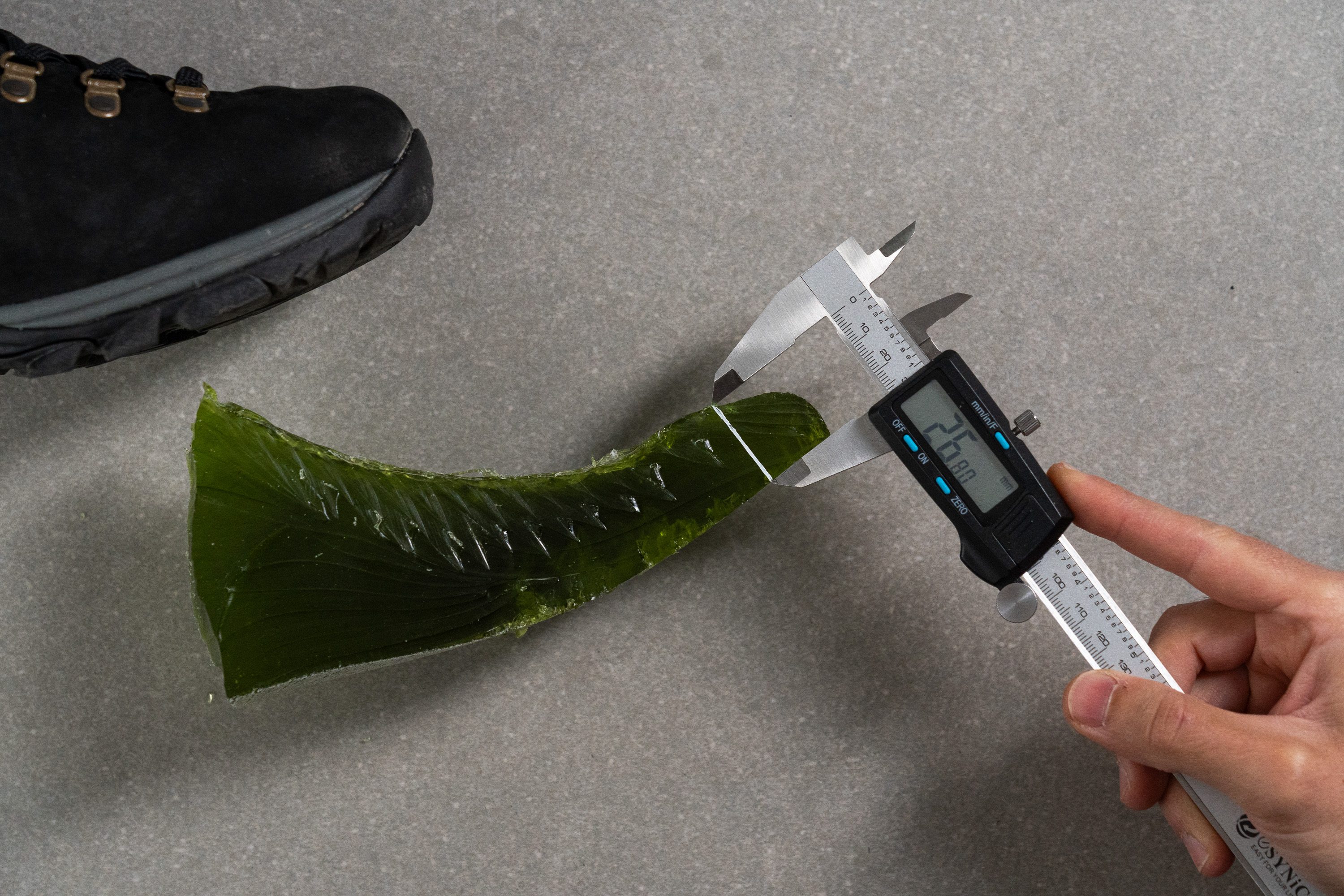
| 320 Trail Lite Evo GTX | 26.8 mm |
| Media | 27.4 mm |
Tracción / Agarre
Profundidad del dibujo de la suela
The boot's Vibram Pillow outsole doesn't have the toothiest lugs. In fact, we measured their depth at only 3.3 mm which is notably shallower than average.
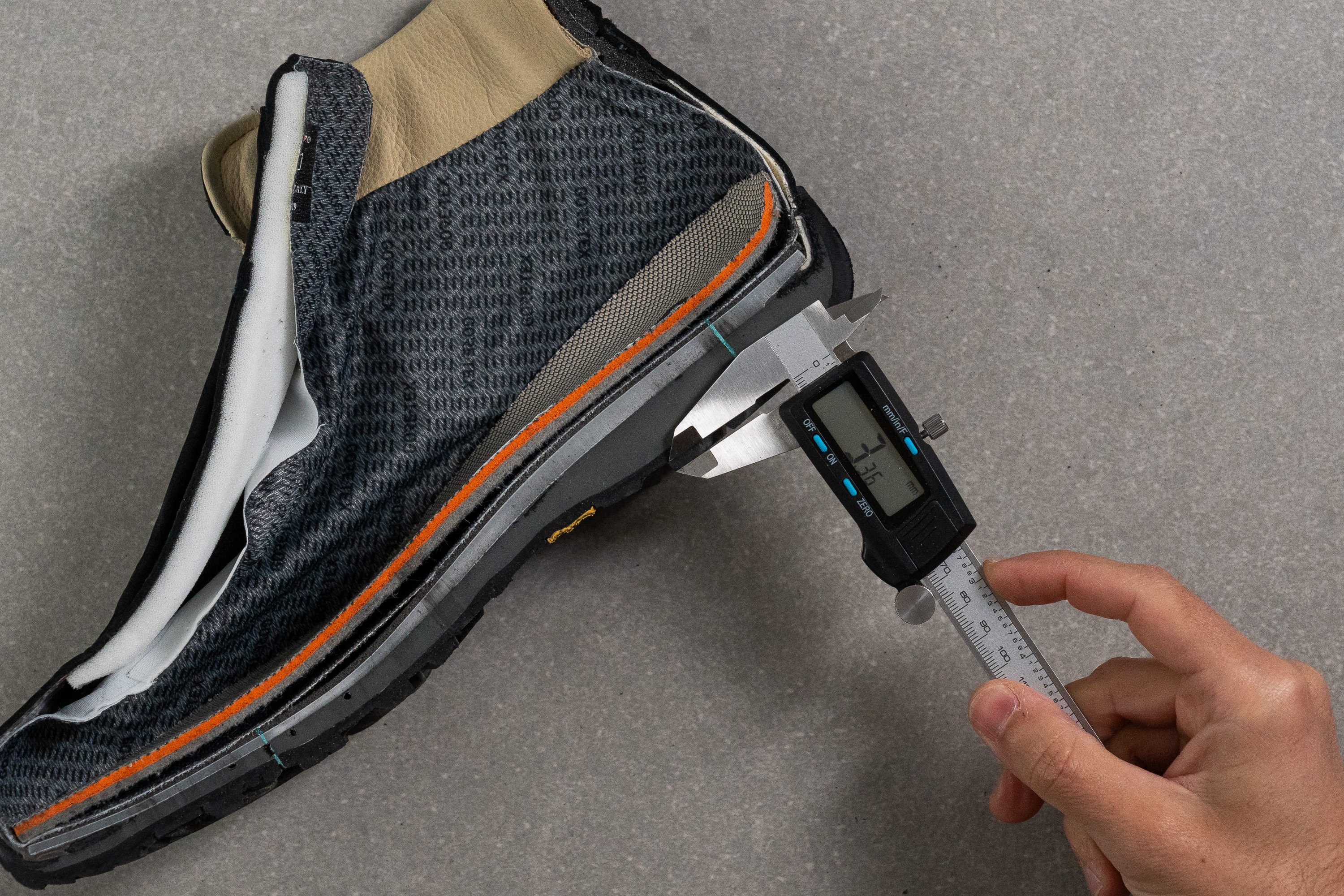
And yet, we were impressed at how the shape and spacing of these lugs resulted in a very grippy and surefooted experience. They inspired confidence on steep rock slabs, mossy logs, and greasy roots.
We were able to stomp through muddy puddles too and found the boot's outsole didn't hold on to the dirt. However, we would prefer deeper 5-6 mm lugs for squelching through peanut-butter mud.
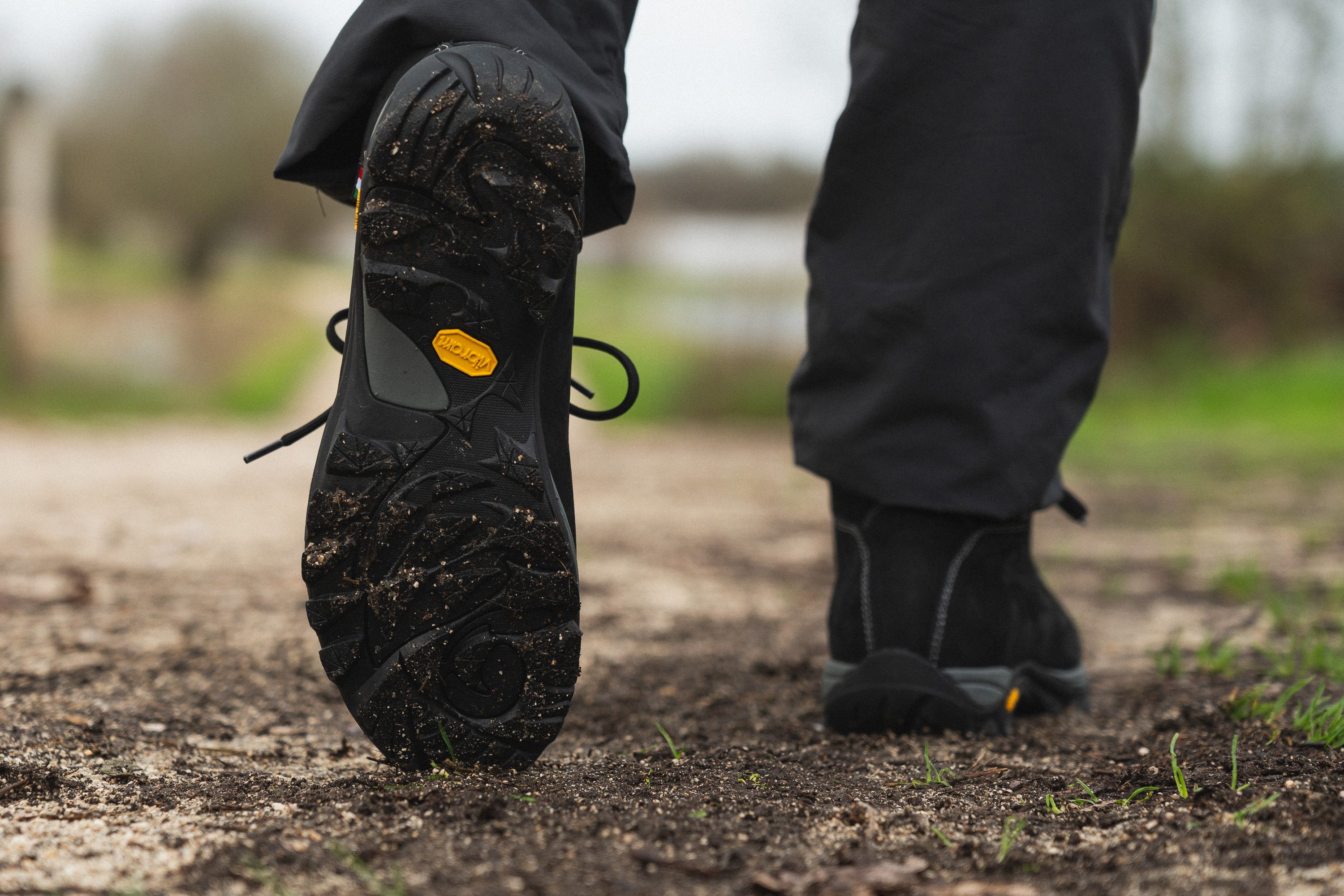
| 320 Trail Lite Evo GTX | 3.3 mm |
| Media | 4.3 mm |
Flexibilidad / Rigidez
Flexibility / Stiffness
The boot's full-length pastic shank and firm EVA midsole become particularly apparent when you try to bend your foot in the 320 Trail Lite Evo GTX.
According to our force gauge, it takes 35% more effort to bend this Zamberlan to a 90-degree angle than it takes an average hiking boot.
This is neither good nor bad and depends on the hiker's personal preference. But the benefit of stiffer boots includes:
- more even pressure distribution on ascents and descents
- more efficient power transfer (especially when heavy load is involved)
- less foot fatigue on longer hikes
En esta prueba se utiliza una metodología antigua, así que no verás las zapatillas que hemos analizado últimamente en la tabla. Los resultados obtenidos con metodologías distintas no se pueden comparar.
| 320 Trail Lite Evo GTX | 67.0N |
| Media | 44.3N |
Rigidez en frío (%)
Just when we thought that the boot couldn't get any stiffer, we found that its rigidity increased by another 32% after the freezer!
The force gauge reading went from 67.0N to 88.3N in 20 minutes making the boot one of the stiffest in our roster!
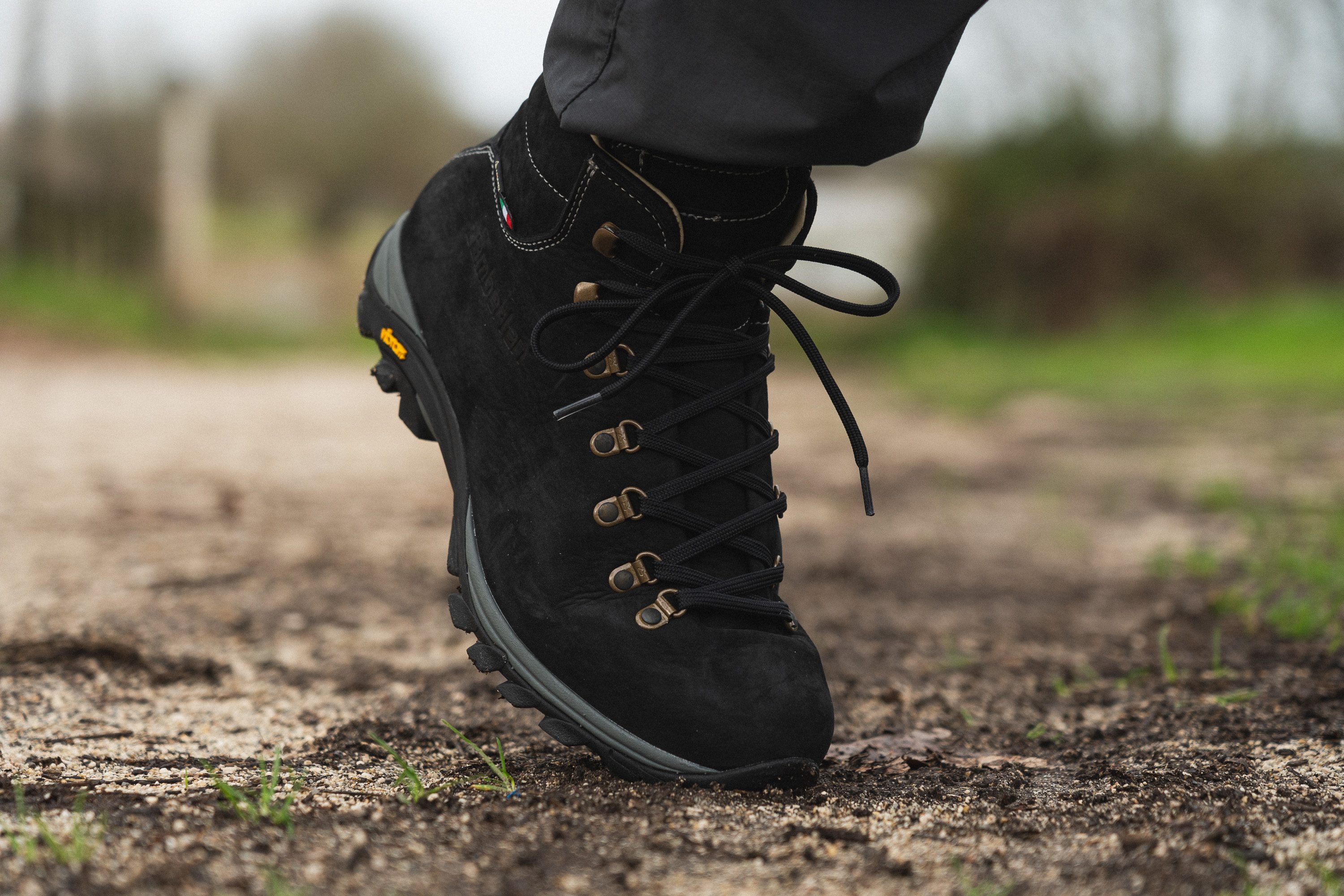
| 320 Trail Lite Evo GTX | 32% |
| Media | 24% |
Peso
Even though our scale showed 19.5 oz (553g), the Zamberlan 320 Trail Lite Evo GTX felt lighter on foot than its static weight suggested.
It may be heavier than average but we found that it is on the lighter side of backpacking boots. We loved the fact that it offers essential stability and sturdiness of a high-mileage boot but without all the extra bulk that normally comes with this type of footwear. Just a clean high-performance silhouette.
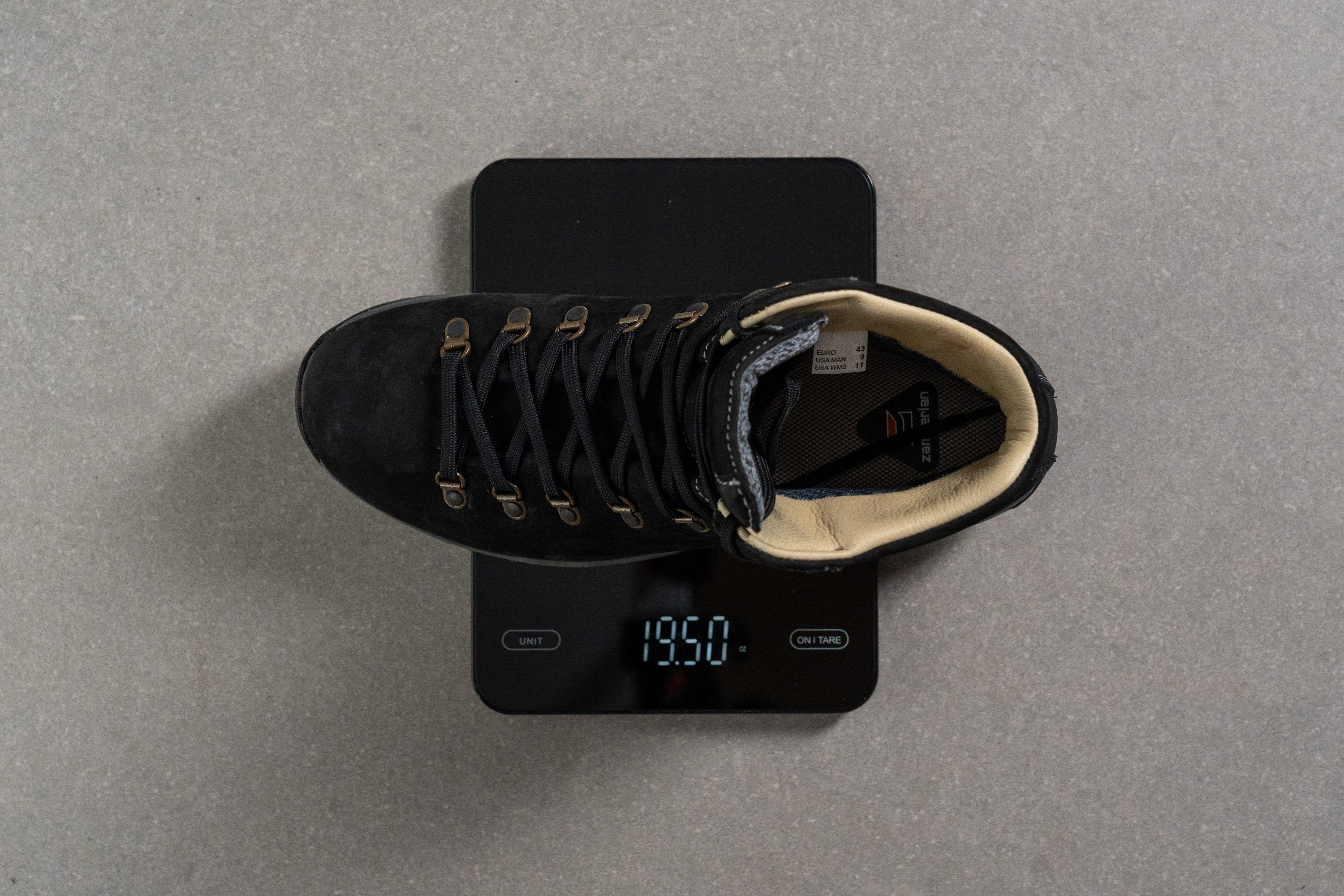
| 320 Trail Lite Evo GTX | 19.5 oz (553g) |
| Media | 18.7 oz (531g) |
Transpirabilidad
Breathability is limited in this Zamberlan boot for obvious reasons. It is an all-leather boot with a highly effective waterproofing membrane and no mesh or ventilation channels.
Having pumped smoke through its toebox, we didn't see a single streak passing anywhere through the seams or eyelets - the boot is 100% sealed. Thus, we rated its breathability with the lowest possible score - 1/5. Not recommended for summer.
| 320 Trail Lite Evo GTX | 1 |
| Media | 1.3 |
Waterproofing
We are happy to report that the Zamberlan 320 Trail Lite Evo GTX is ready to brave the water element! Rain, puddles, shallow creeks, wet underbrush - none of it caused any leaks inside the boot!
With a Hydrobloc nubuck leather on the outside and a Gore-Tex Extended Comfort membrane on the inside, the boot offered maximum protection.
But if you expect extra wet conditions with a lot of water exposure, we highly recommend treating the boot's leather with a waterproof spray for added reinsurance.
Estabilidad
Prueba de estabilidad lateral
Side-to-side stability is a top priority for this Itallian boot.
We found that its sturdy built is capable of keeping the foot steady during high-mileage backpacking objectives and never felt at risk of ankle rolls. Even when tackling hilly terrain with lots of ascending, descending, and off-camber sections.
Rigidez torsional
The primary source of stability in the 320 Trail Lite Evo GTX is, of course, its ultra-stiff midsole that just does not let the foot buckle!
We could feel a ton of resistance coming from the boot's dense components as we attempted to twist it in our manual test. Because of that, we gave its torsional rigidity a maximum score of 5/5 without hesitation.
| 320 Trail Lite Evo GTX | 5 |
| Media | 4.4 |
Rigidez del contrafuerte del talón
Zamberlan also grants a very secure heel hold in the 320 Trail Lite Evo GTX which is reflected in its stiff and structured heel counter. Because we could barely squeeze it in our manual test, the boot's heel counter got a high stiffness score of 4/5.
Our heels and ankles were treated to an ergonomic fit and comfortable padding which is in part what makes the boot's step-in feel so cozy.
| 320 Trail Lite Evo GTX | 4 |
| Media | 3.6 |
Anchura de la mediasuela - antepié
Interestingly enough, the 320 Trail Lite Evo GTX provides all that surefootedness without packing a very wide platform. Measuring the widest part of its midsole in the forefoot, our caliper showed a moderate reading of 105.6 mm.
A narrower base makes this Zamberlan boot much lighter than a typical backpacking boot as well as more maneuverable on rocky and debris-laden trails.
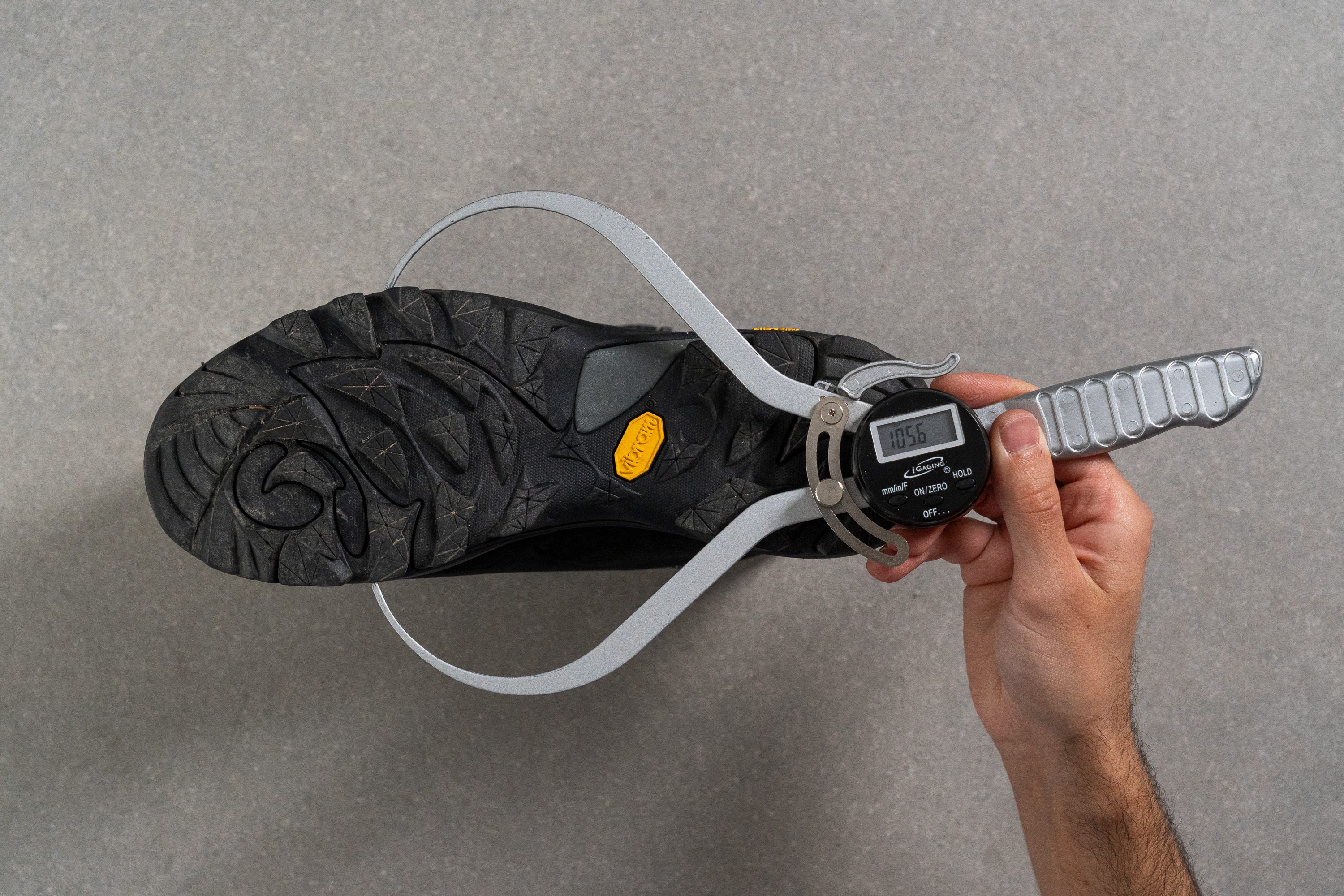
| 320 Trail Lite Evo GTX | 105.6 mm |
| Media | 111.5 mm |
Anchura de la mediasuela - talón
As we anticipated, the boot's heel also turned out to be significantly narrower than average at 79.9 mm. And yet, it wasn't critically slim to cause any wobbliness.
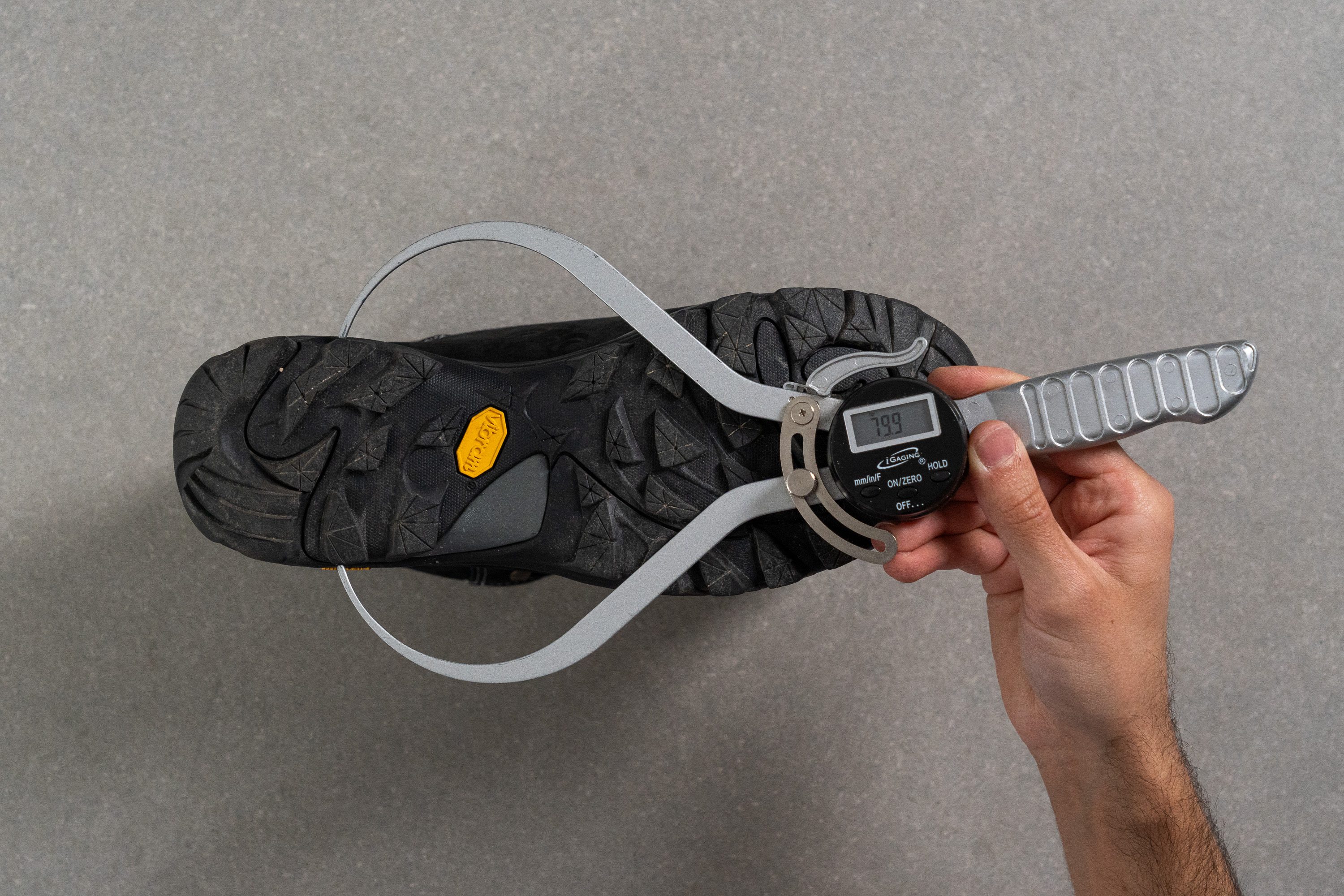
| 320 Trail Lite Evo GTX | 79.9 mm |
| Media | 87.6 mm |
Durabilidad
Durabilidad de la parte delantera
Even though it is so pleasantly soft and deicate to touch, the boot's tumbed nubuck leather shows impressive abrasion resistance! This is all thanks to the artisanal tanning process which allows combining the two features in one material.
To put the boot's nubuck through the test, we drilled the top of its toebox with sandpaper for 12 seconds at 5K RPM Dremel speed.
Considering that the tool merely brushed the topmost fluff off the leather, we confidently gave it the highest durability score of 5/5.
| 320 Trail Lite Evo GTX | 5 |
| Media | 4.3 |
Durabilidad del acolchado del talón
Italian quality is woven into every little detail of this Zamberlan boot, even its inner collar lining! Covered in soft and smooth leather, it resisted our 4-second Dremel test brilliantly which earned the boot another high durability score - 5/5 for the heel padding.
| 320 Trail Lite Evo GTX | 5 |
| Media | 3.6 |
Dureza de la suela
Of course Zamberan had to partner with another acclaimed Italian brand Vibram to put a high-quality outsole on the 320 Trail Lite Evo GTX.
With an expectedly high reading of 85.0 HC, we have no concerns about the longevity of this rubber blend.
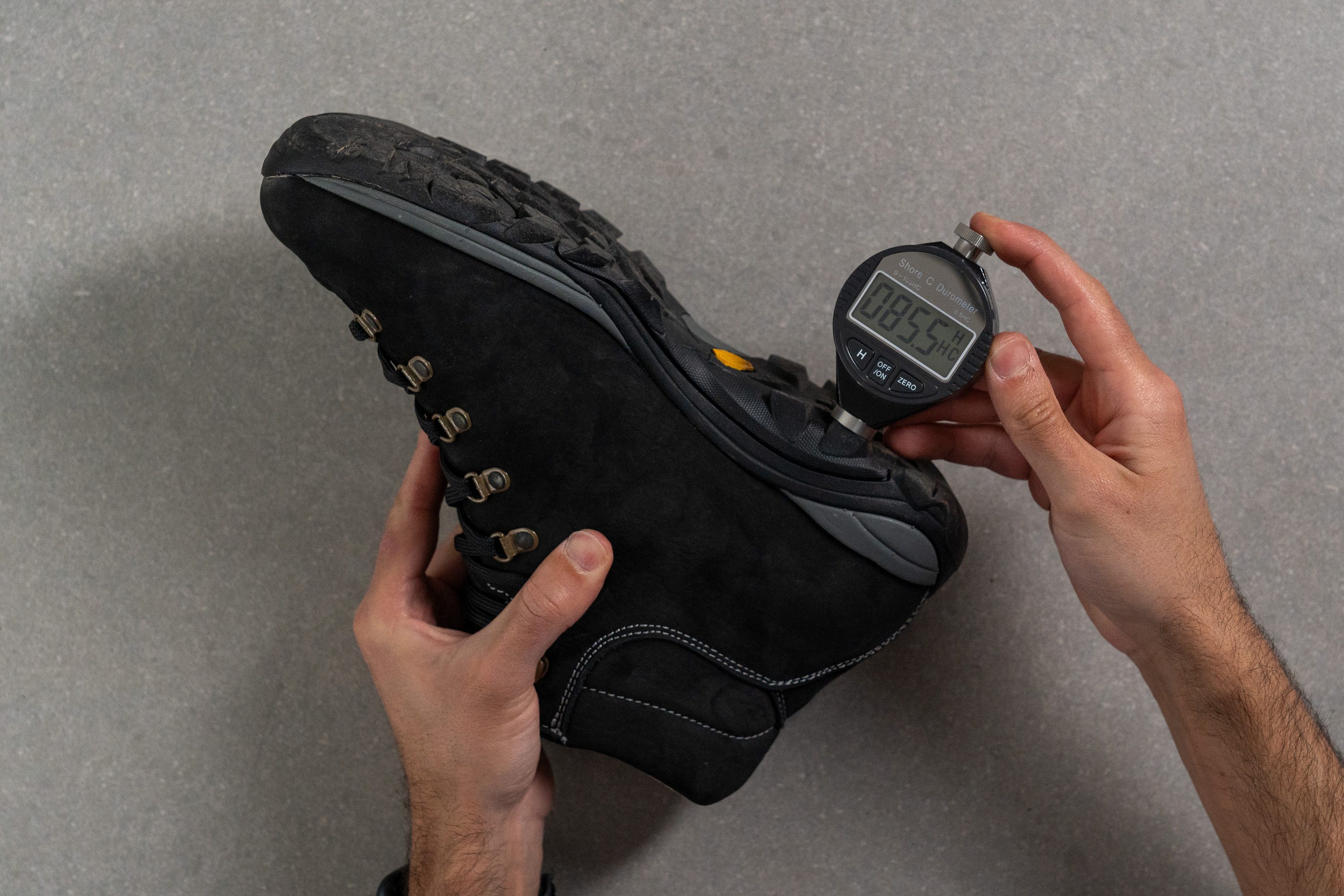
| 320 Trail Lite Evo GTX | 85.0 HC |
| Media | 87.1 HC |
Durabilidad de la suela
Our demanding sandpaper test confirmed these high-set expectations as the Dremel did not get any deeper than 0.6 mm into the compound! That's a solid above-average result for a hiking boot.
| 320 Trail Lite Evo GTX | 0.6 mm |
| Media | 0.8 mm |
Grosor de la suela
We were also satisfied with the boot's outsole thickness as it showed a caliper reading of 3.0 mm excluding lug depth. Adequately thick, hard, and wear-resistant, we expect a lot of life from the boot's Vibram outsole!
The fact that it is resolable also adds points to this Zamberlan boot.
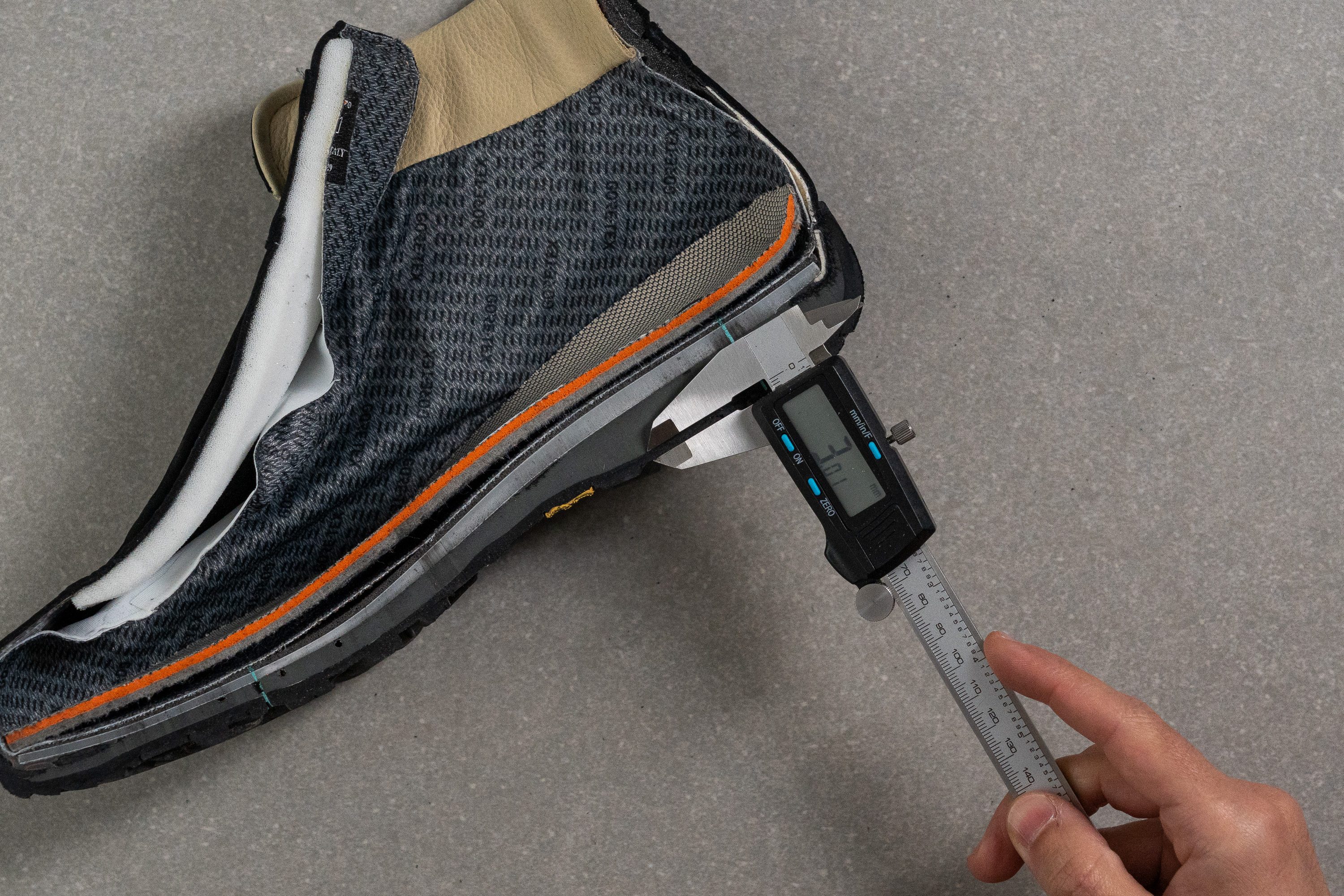
| 320 Trail Lite Evo GTX | 3.0 mm |
| Media | 2.9 mm |
Varios
Grosor de la plantilla
The oot's cushioning setup is complemented by an adequately padded insole. We measured its thickness at a decent 4.9 mm in the heel.
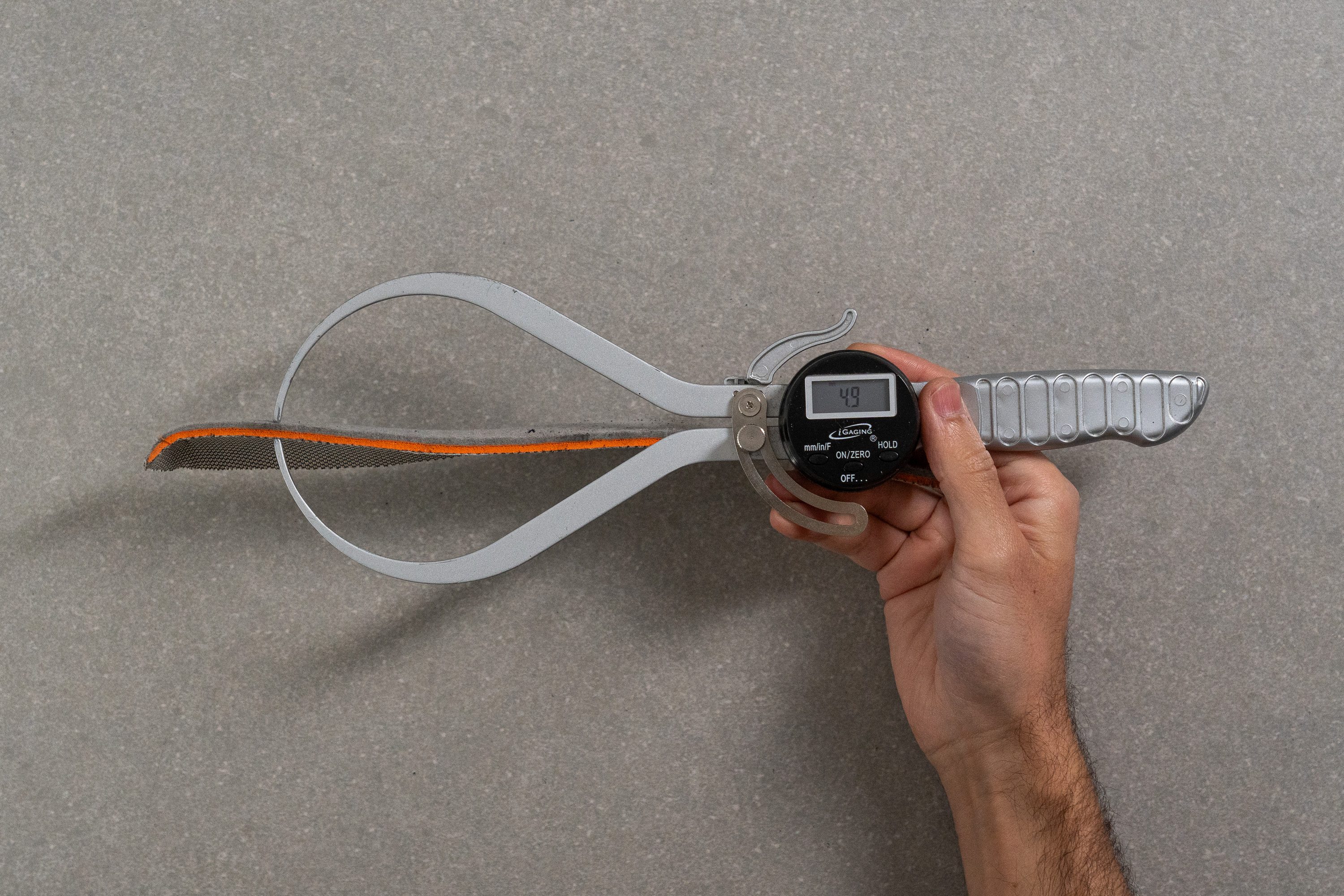
| 320 Trail Lite Evo GTX | 4.9 mm |
| Media | 6.0 mm |
Plantilla extraíble
The boot's insole is easily removable in case you need to use custom orthotics or any other insoles.
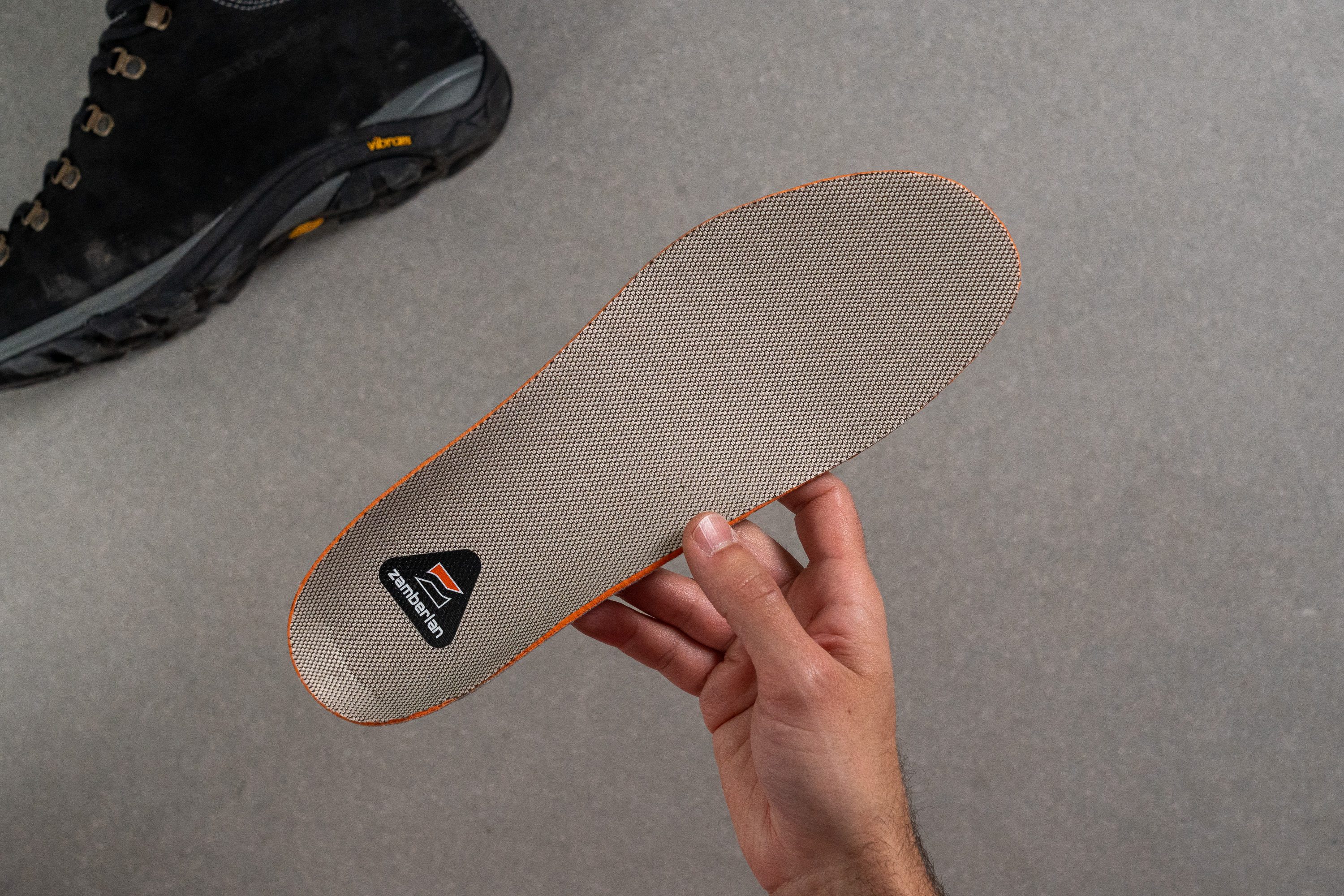
| 320 Trail Lite Evo GTX | Sí |
Rigidez de la mediasuela en frío (%)
On the bright side, you don't need to worry that the cushioning of this Zamberlan boot will freeze solid in cold weather. It is already as hard as it gets!
After keeping the boot in the freezer for 20 minutes, it showed a very moderate firmness change of 14%.
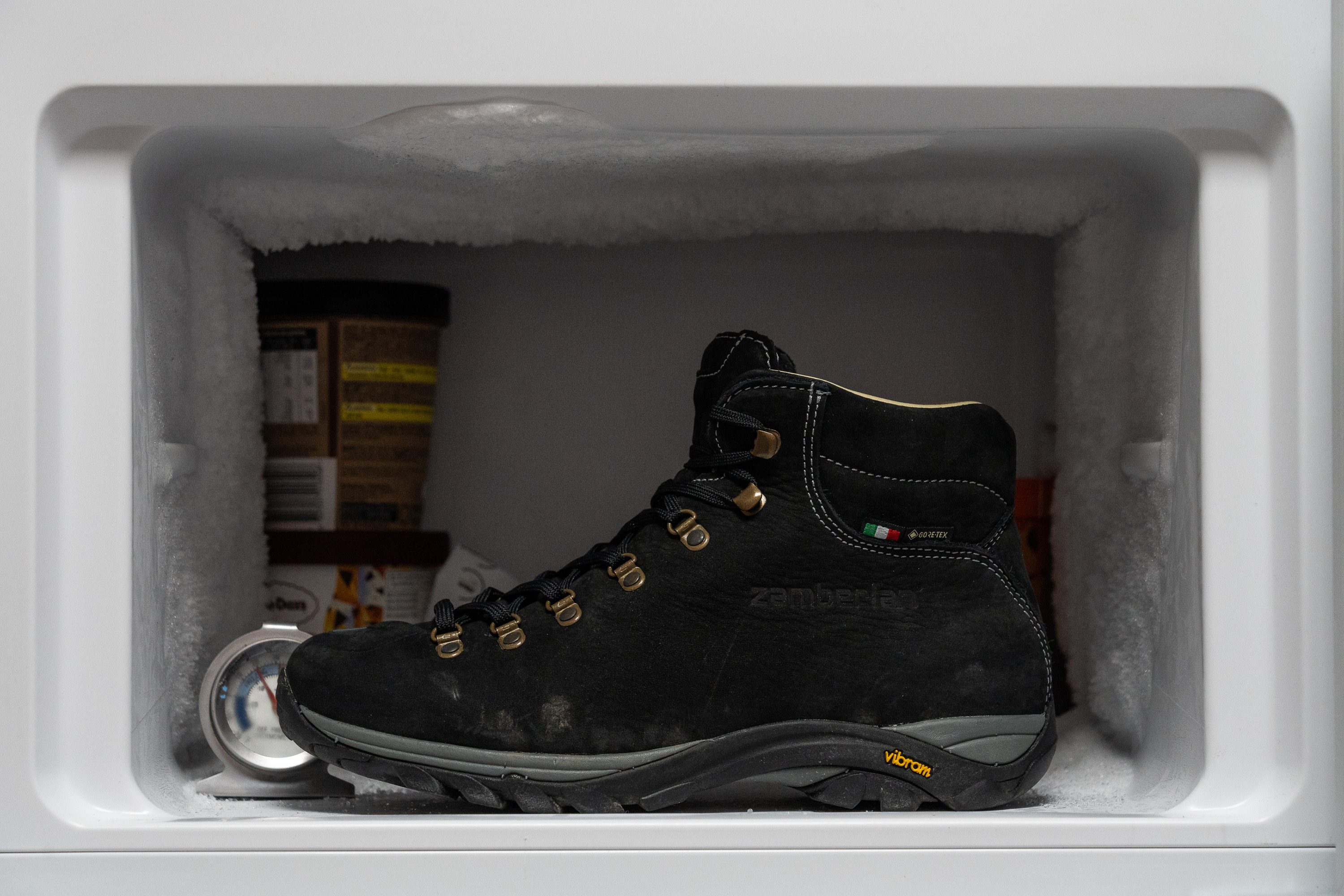
| 320 Trail Lite Evo GTX | 14% |
| Media | 20% |
Elementos reflectantes
There are no reflective elements on this Zamberlan boot.
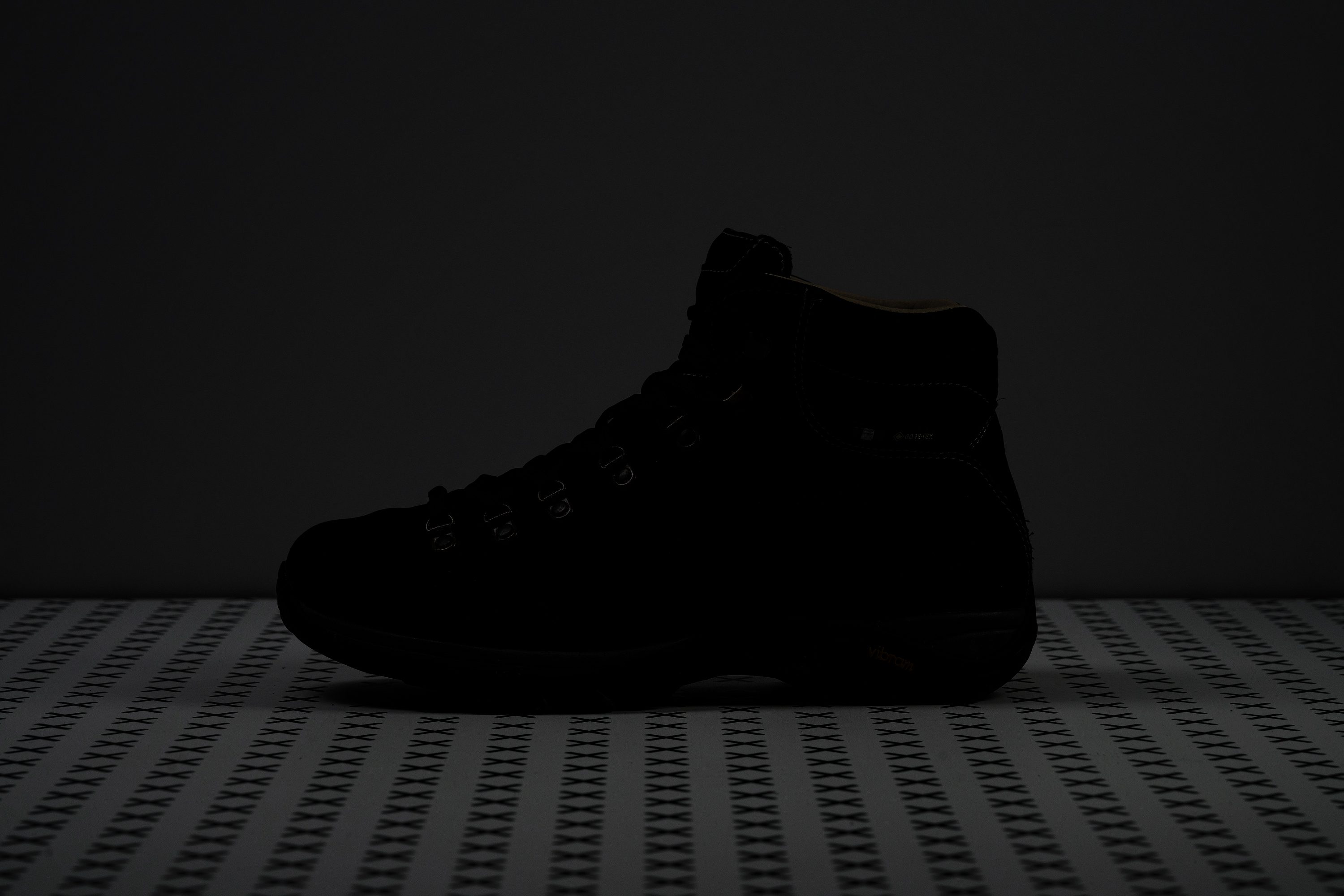
| 320 Trail Lite Evo GTX | No |
Acolchado de la lengüeta
A padded tongue contributes to the luxuriously comfortable interiors of the Trail Lite Evo GTX. We measured its thickness at a standard 10.2 mm.
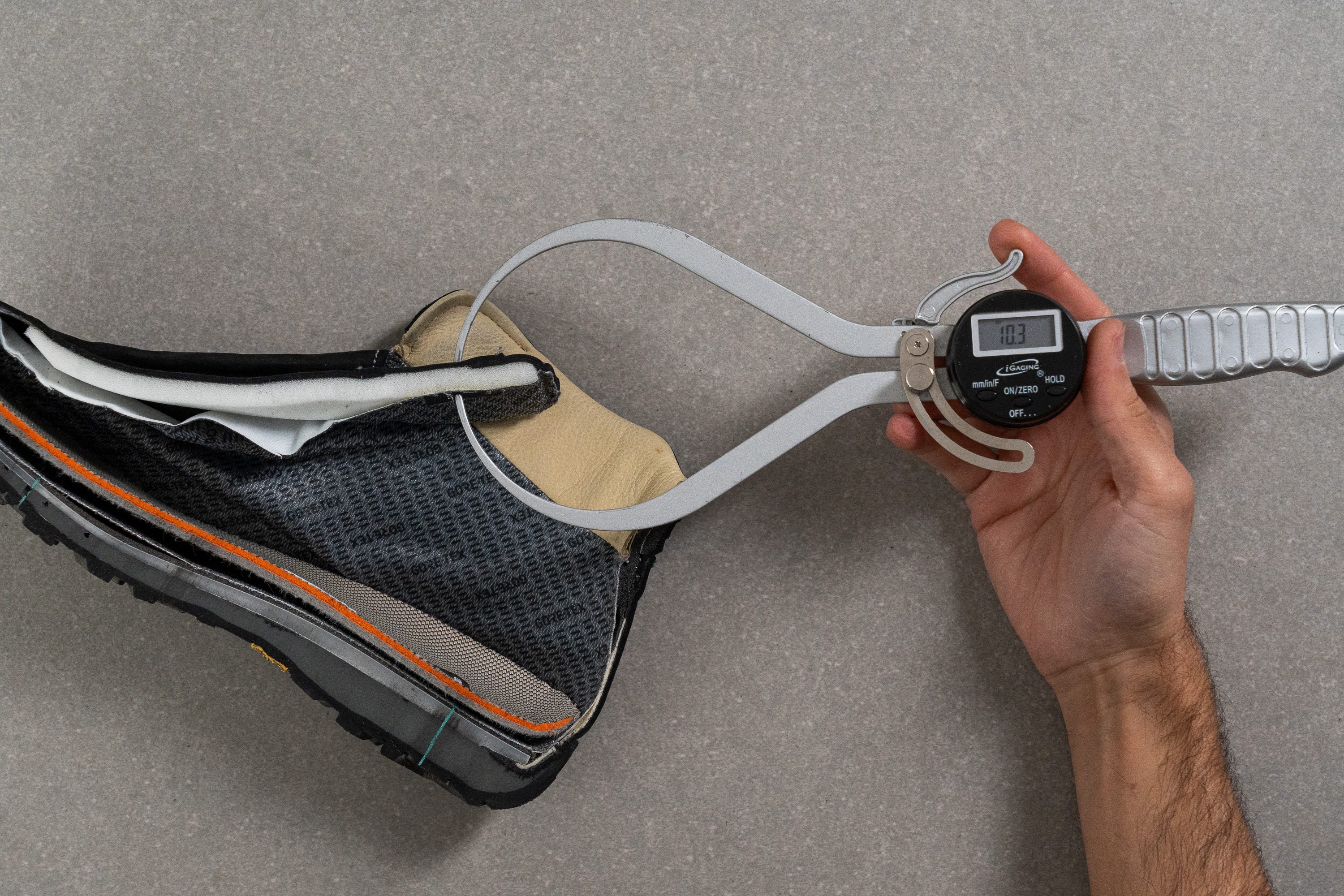
| 320 Trail Lite Evo GTX | 10.3 mm |
| Media | 11.2 mm |
Lengüeta: tipo de refuerzo
The boot's upper is a one-piece construction where the tongue is inseparable from the rest of the boot. This makes the Trail Lite Evo GTX effectively waterproof and protects the interiors from debris. It also contributes to a secure fit.

| 320 Trail Lite Evo GTX | Ambos lados (completo) |
Precio
The 320 Trail Lite Evo GTX comes with a hefty price tag which is in part due to the high-end yet expensive artisanal tanning process used in the production of its nubuck eather. It is a more eco-friendly process which involves natural elements but is more difficult, rare, and costly.
But if you aren't specifically looking for that kind of leather tanning, you may find this Zamberlan boot rather overpriced. For the same MSRP, the market offers notably more reinforced and technical backpacking boots like the Asolo Fugitive GTX and the Salewa Mountain Trainer 2 Mid GTX. Both are flagship hiking and trekking boots which are ready for some serious outdoor action.
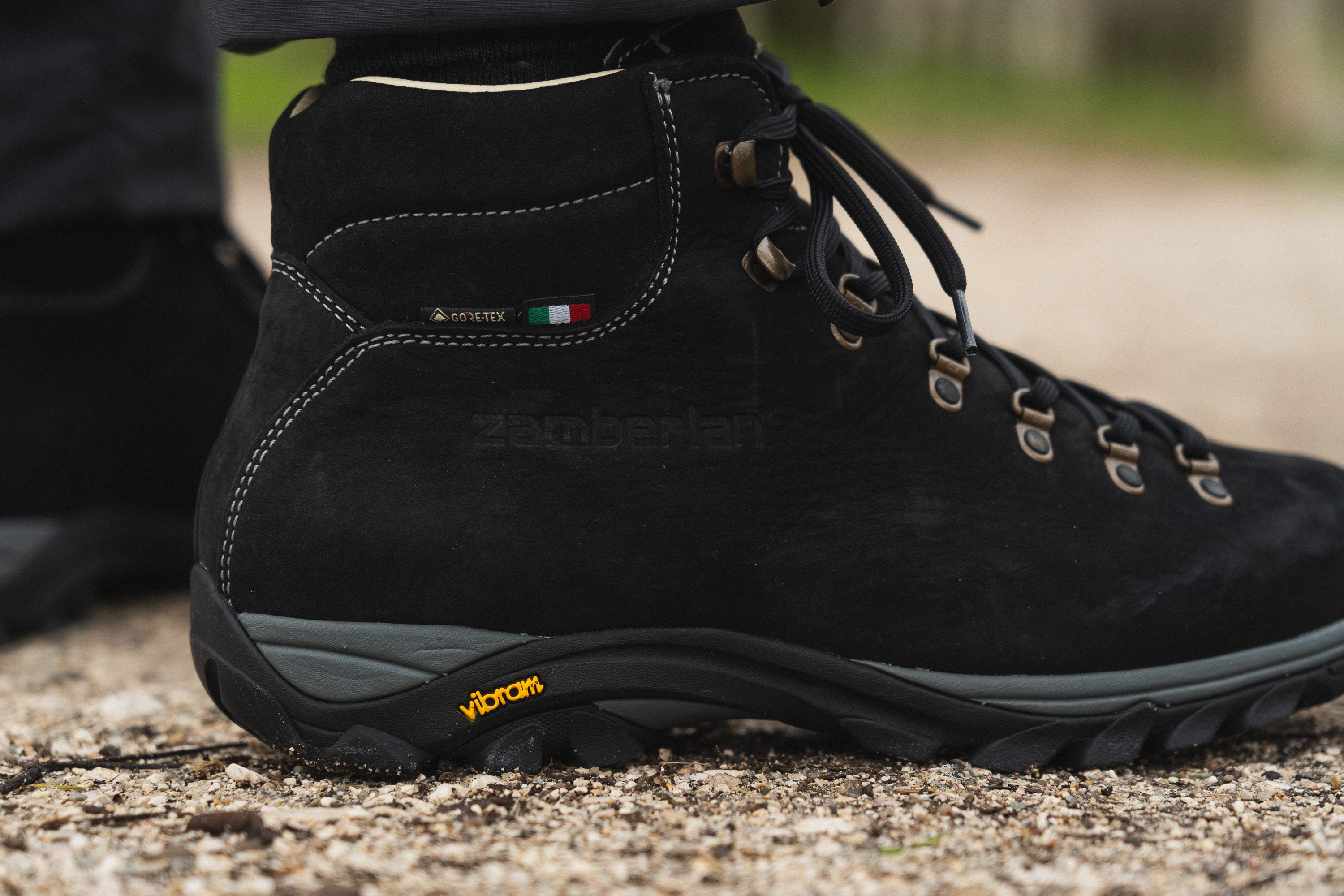
| 320 Trail Lite Evo GTX | $300 |
Tirador del talón
There are no pull tabs on the boot but it is rather easy to put on and take off.
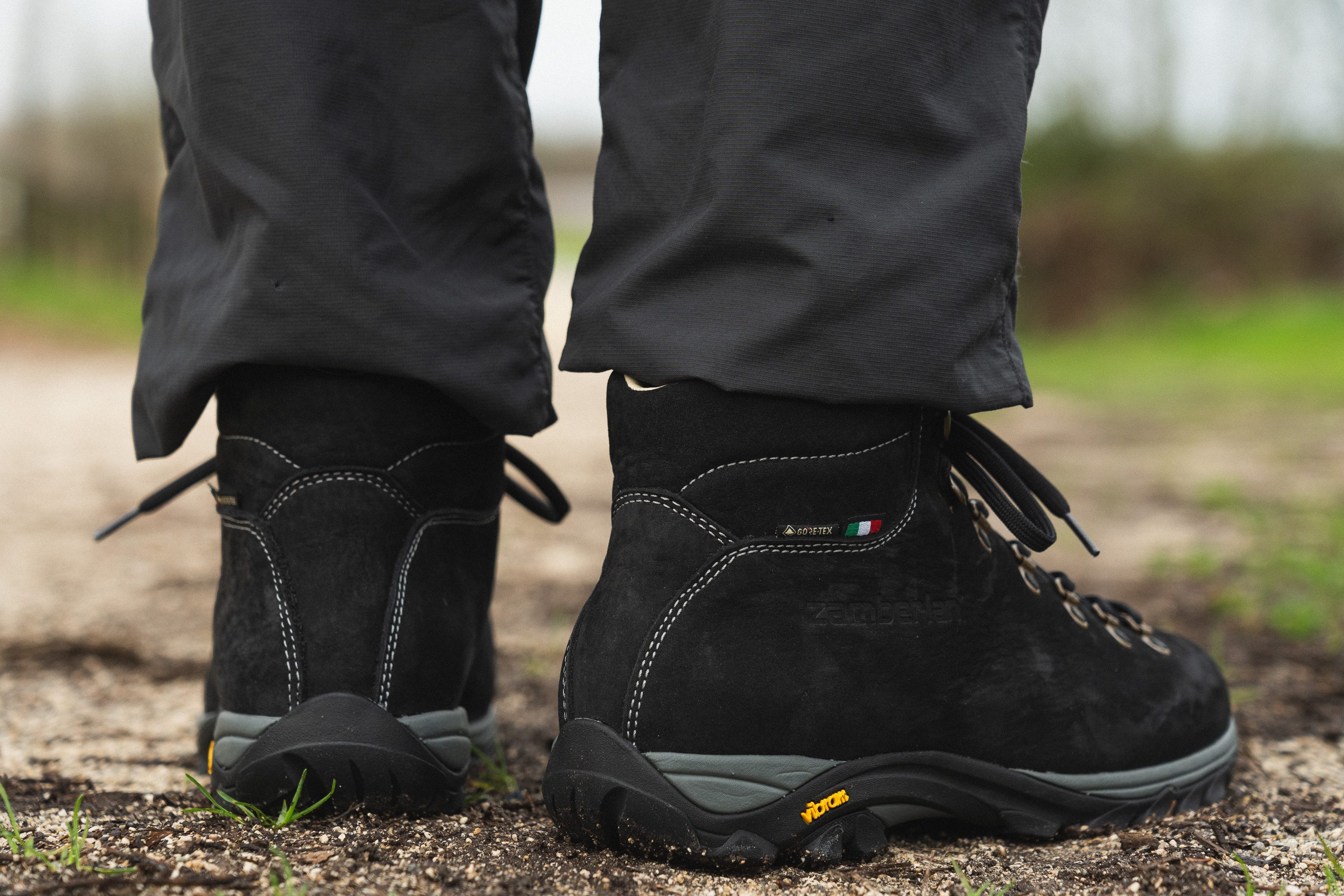
| 320 Trail Lite Evo GTX | Ninguno |

